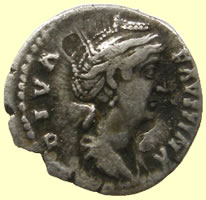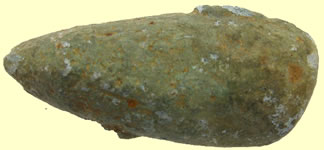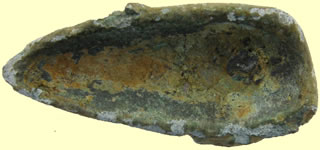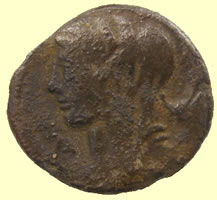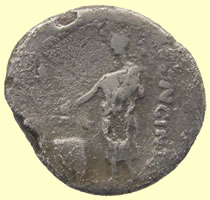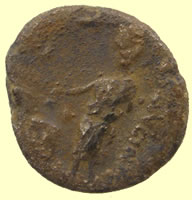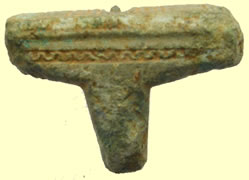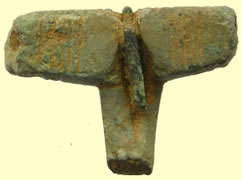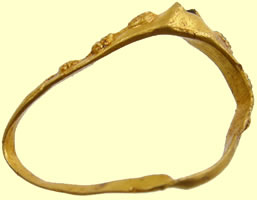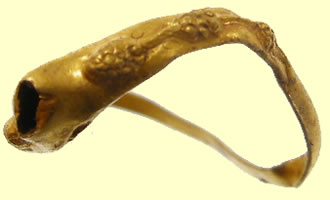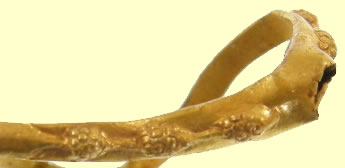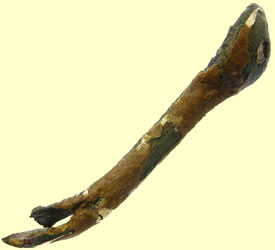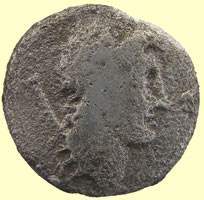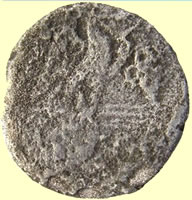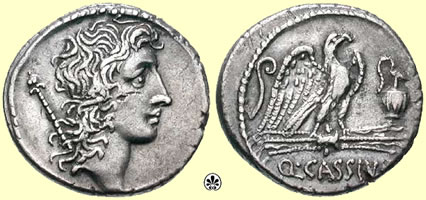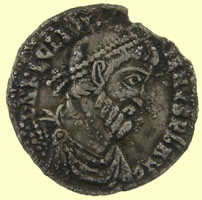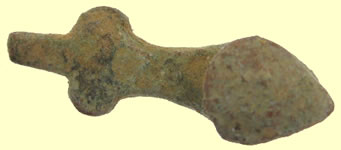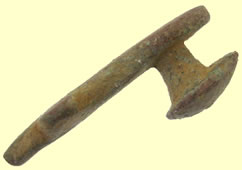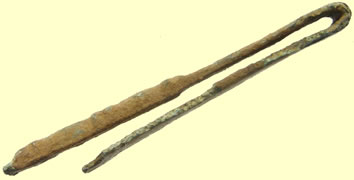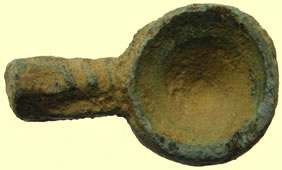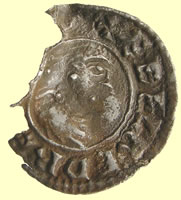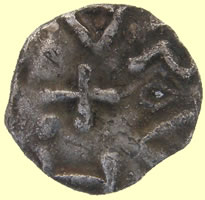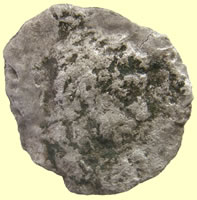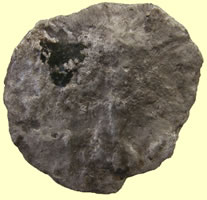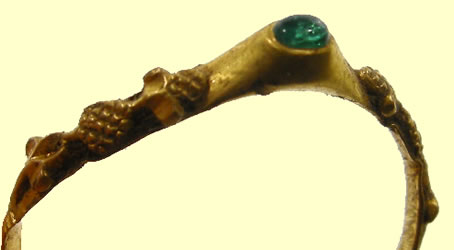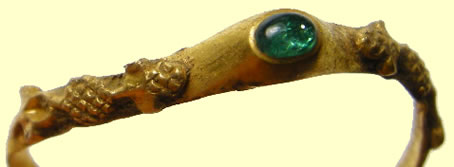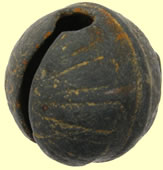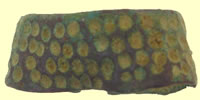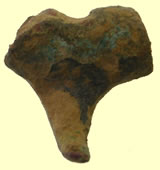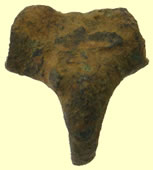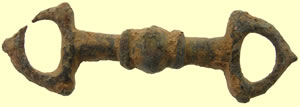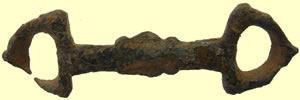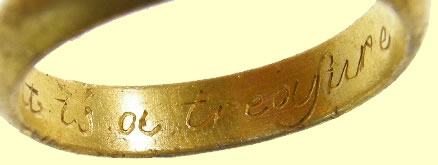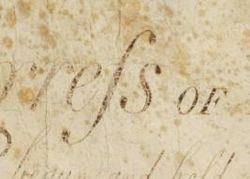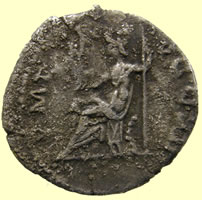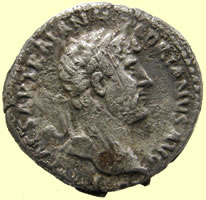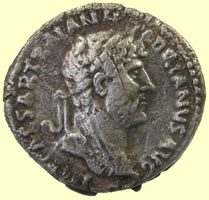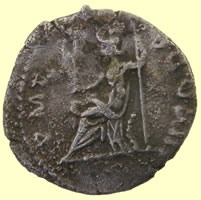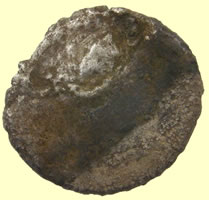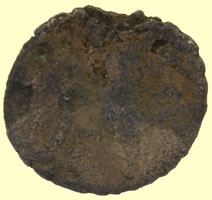

Metal detecting holidays in England with the World's most successful metal detecting club.
Twinned with Midwest Historical Research Society USA
2011 April finds page |
2ndC Roman silver sent for ID this is a posthumous commemorative denarius of Faustina Sr., wife of Antoninus Pius, mother of Faustina Jr who was the wife of Marcus Aurelius, and so both Aurelius' mother-in-law and grandmother of emperor-to-be Commodus. Not all the Faustina coins are quite so simple - Faustina Jr. had separate lifetime issues by Antoninus Pius and Marcus Aurelius, and posthumous issues by Marcus Aurelius. Faustina Sr.'s coins, however, can be divided into two main groups - Lifetime and Posthumous. She died in AD 141, but the majority of her posthumous coins were issued after 147. At this time, her daughter was made Augusta and that title was dropped from her name on posthumous issues. It's thought that the greater number of her posthumous coins as deified (DIVA) were issued around the 10th & 15th anniversaries of her death (151 & 156 AD), but since there is no clear succession of types to assist in dating, most references merely say "post 147 AD."
This reverse is inscribed AVGVSTA and shows Ceres holding a torch. There is a large series of AVGVSTA reverses. Ceres, along with Juno, Vesta and Venus are the most commonly seen characters on the reverses of her posthumous coinage.
Mark
|
|||||||||
  |
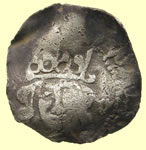 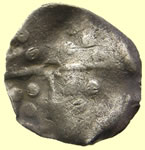 |
||||||||
1696 William III milled silver sixpence - Norwich mint |
1327 Édward III hammered silver penny - pellet at centre class 15d |
||||||||
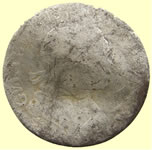 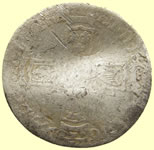 |
|
||||||||
1697 William III milled silver sixpence |
Celtic cosmetic wode grinder |
||||||||
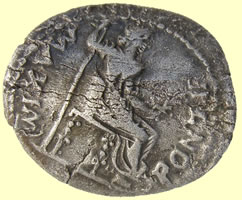  |
|||||||||
|
Roman silver coin sent for ID This appears at first glance to be a normal denarius of Tiberius - the common type, struck continuously throughout his reign from 12-37 AD. As you're probably aware, denarii of this type have for years been successfully marketed as the so-called "Tribute Penny", in reference to the passage in Matthew. Since I've commented several times on the likelihood (or lack thereof) of this coin being in normal circulation in Judaea c 25-30 AD, I won't belabor the point. Folks may believe what they want to believe - they will regardless. Did you do the straightening? Whoever did it was lucky, since the silver shows significant crystallization and it appears that it could have broken in the process very easily (and may yet) to judge by the surface fracturing along the bend-axis on the reverse.
This piece is unusual mostly because the workmanship is so crude, relatively speaking.
At this point, I was going to include a link to a more typical piece of this type, but my website's server appears to be down at the moment.
You describe it as "thick". The weight, however, although at the higher end of the range, is within normal variation for these. My guess is that this might be an ancient counterfeit - made to deceive, IOW, rather than the sort of officially sanctioned copies represented by the contemporary copy radiates. It's possible that it was struck in a somewhat less fine silver by someone who had the skills necessary to create believable dies - or who was in league with someone skilled. However, I'm basing this guess primarily on the appearance of the lettering - which is blobby and uneven. It's also possible that it's just a usual official piefce and is the product of "Friday afternoon workmanship" on the legends, since the main devices are relatively well - if a bit coarsely - executed.
Mark
|
|||||||||
As dug and 'cooked' |
|||||||||
BC Roman Republican silver sent for ID This one is L Cassius Longinus, 63 BC.
Obv: Veiled and diademed head of Vesta left, 2-handled cup behind, control letter before.
Rx:Togate citicizen standing left depositing ballot inscribed, V (Uti Rogas) in voting box; LONGIN III V behind.
CRR 935, RSC/Babelon Cassia 10, SR 364.
Mark
|
|||||||||
 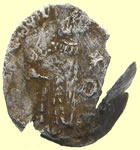 |
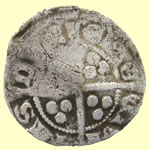 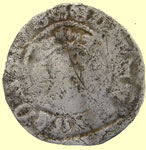 |
||||||||
Venetian Soldino issued by Doge Michele Steno (1400-1413). Obv: MICHAEL STEN' DVX (Michele Steno, Doge). Doge standing left, holding standard. Rev: S MARCVS VENETI (Saint Mark of Venice). Winged and nimbate lion of Saint Mark facing. |
1361 Edward III hammmered silver penny - Transitional period CIVI/TAS/DOR/ELME - Durham mint |
||||||||
  |
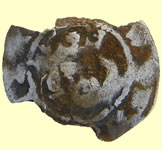 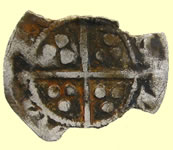 |
||||||||
1215 Henry III hammered silver short cross cut half penny |
1327 Edward III hammered silver half penny - London mint |
||||||||
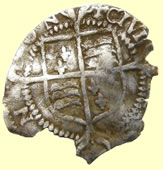 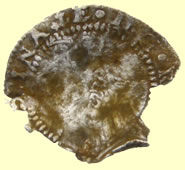 |
  |
||||||||
1560-1 Elizabeth 1st hammered silver half groat - Cross crosslet mintmark |
1569 Elizabeth 1st hammered silver sixpence |
||||||||
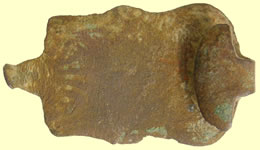 |
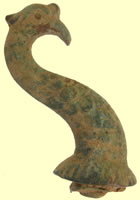 |
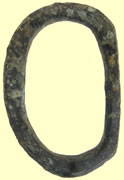 |
 |
||||||
18thC clog fastener |
Roman mount |
Medieval D buckle |
WWII Royal Fuseliers cap badge |
||||||
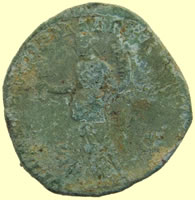 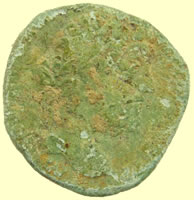 |
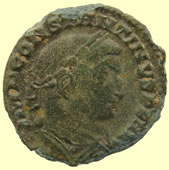 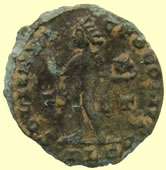 |
||||||||
2ndC Roman bronze coin sent for ID 16.36g, 27.34mm The sestertius is either Antoninus Pius or Marcus Aurelius as Caesar (during the reign of Antoninus Pius). Their portraits are just too similar during that period - 139-161 AD - to be able to tell them apart in this photo - there's simply not enough contrast even to be able to tweak-up some bits of legend to try to tell them apart. The reverse is probably Liberalitas - they did a number of donatives to the public and so the Liberalitas reverses are pretty common. Probabaly no other 20-yr period saw the striking of more types of sestertii, so pinning this one down any closer without being able to read any legend is just not likely to happen. If you can take a photo in oblique light that allows some shadows to point-up what relief may be visible - or if it cleans up to be more legible, send me more photos and I'll see if I can pin it down more closely for you.
Mark
|
4thC House of Constantine Roman bronze sent for ID 3.71g, 22.01mm The Constantine is a SOLI INVICTO COMITI reduced-module follis from Lugdunum. It was rather early in the series of size reductions, so it's still fairly substantial by the standards of the later 4th century, although the follis was nearly the size of a 2nd century sestertius when first introduced - not quite so thick, but similar diameter.
with the field- and mint marks like this
F | T
P L C
It belongs to the issue of 309-10 AD - right at the beginning of Constantine's general acceptance as an Augustus.
catalog: RIC VI Lugdunum 308.
|
||||||||
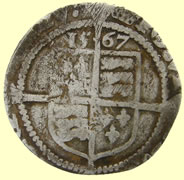 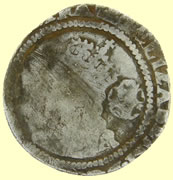 |
 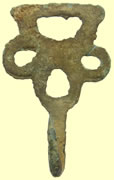 |
||||||||
1567 Elizabeth hammered silver sixpence |
16thC hooked clothing fastener - gilded |
||||||||
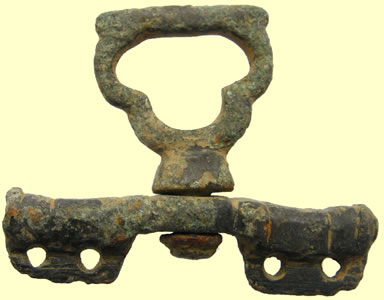 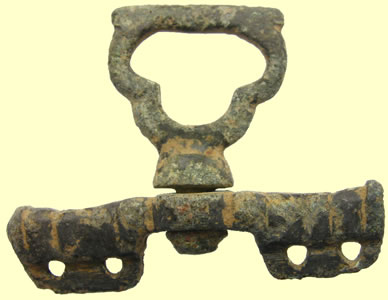 |
|||||||||
Stunning complete medieval decorated purse bar and swivel
|
|||||||||
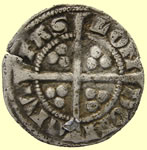 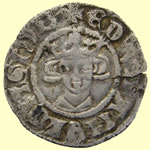 |
 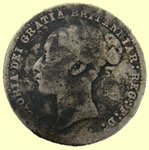 |
||||||||
1341 Edward III hammered silver penny florin penny Obv EDWAR ANGL DNS HYB Rev CIVI/TAS/LON/DON - London mint |
1878 Victoria milled silver sixpence |
||||||||
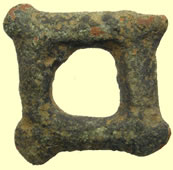 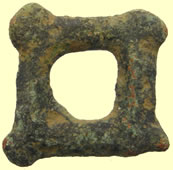 |
|
||||||||
C10thC Saxon harness cheek piece |
Very unusual 2nd C Roman fibular brooch - not a design I know |
||||||||
 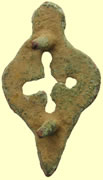 |
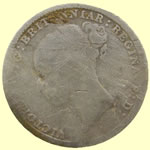  |
||||||||
Medieval mount with 2 integral lugs |
19thC Vicrorian milled silver 3 pence |
||||||||
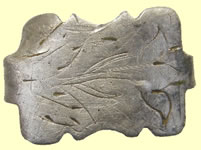 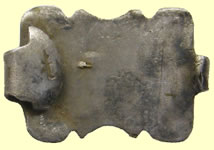 |
  |
||||||||
18thC silver clog fastener |
1216 Henry III hammered silver cut half penny |
||||||||
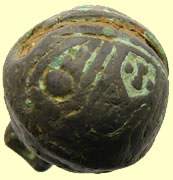 |
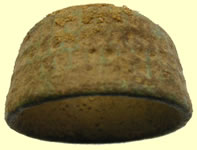 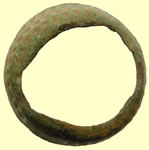 |
||||||||
17thC Enameled decorated crotal bell |
15thC open topped thimble |
||||||||
 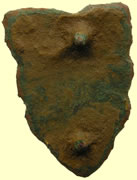 |
 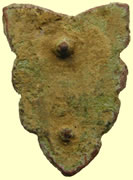 |
||||||||
Medieval gilded mount with 2 integral lugs |
Medieval gilded mount with 2 integral lugs |
||||||||
  |
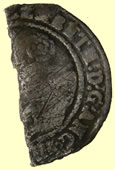 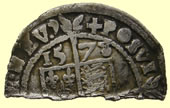 |
||||||||
16thC Elizabeth 1st hammered silver sixpence |
1578 Elizabeth 1st hammered silver half groat |
||||||||
 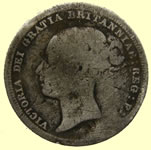 |
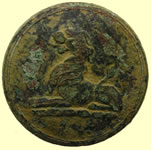 |
 |
|||||||
1885 Victoria milled silver sixpence |
19thC livery button |
1634 Charles 1st trade weight - Crown CR cipher |
|||||||
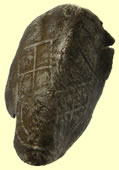 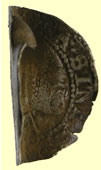 |
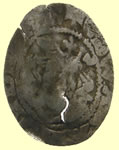 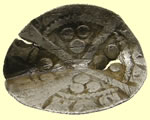 |
||||||||
1603 James 1st hammered silver hlaf groat |
1341 Edward III hammered silver penny florin penny Obv EDWAR ANGL DNS HYB Rev CIVI/TAS/LON/DON - London mint |
||||||||
 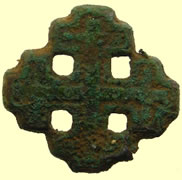 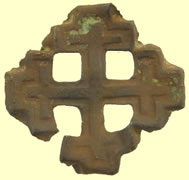 |
|||||||||
2 - Medieval badges Ref Mitchiner p244 939 - 941
'A badge for a Knight of the Order of the Holy Sepulchre in bronze and dating somewhere around C13/14th possibly very slightly later . This is a very scarce item and it relates to The Equestrian Order of the Holy Sepulchre of Jerusalem being a Catholic chivalric order of Knighthood that traces its roots to Godfrey of Bouillon, principal leader of the First Crusade. According to reliable sources in the Vatican and Jerusalem, it began in historical reality as a mixed clerical and lay confraternity (association) of pilgrims which gradually grew around the most central of the Christian holy places in the Middle East, the Holy Sepulchre or the tomb of Jesus Christ.This would have been a pin for a member of the order , there is a mark on the reverse where the original pin would have been fixed '
|
|||||||||
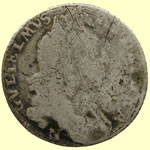 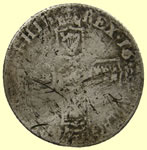 |
 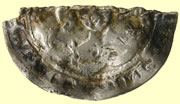 |
||||||||
1696 William III milled silver sixpence - Norwich mint |
1471-1483 Edward VII hammered silver groat - Rose on breast London mint |
||||||||
|
|||||||||
Roman gold ring -decorated with hanging fruit and vine - reported as treasure to museum 1.46g, 24.49mm |
|||||||||
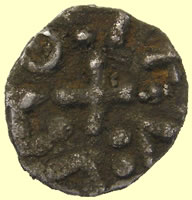  |
 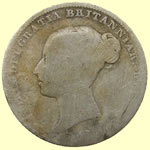 |
||||||||
Saxon C600-775 AD Silver Sceat - sent to Fitzwilliam museum for recording and ID 1.05g, 12.41mm |
1843 Victorian milled silver sixpence |
||||||||
|
|||||||||
Saxon hanging heavily gilded pendant ?? 39.97mm L |
|||||||||
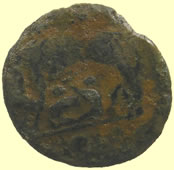 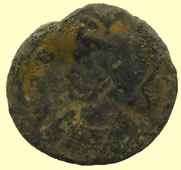 |
 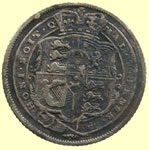 |
||||||||
You're correct that this coin has a Shewolf & Twins reverse which is typically found on the VRBS ROMA, City of Rome commemorative, reduced-module folles introduced around 330 AD., at the time Constantinople became the official seat of Constantine's government. These have a helmeted and mantled bust of the allegorical personification of the City of Rome facing left on their obverses. At approximately 17mm (although at 1.41gm, it's on the light side) it's most likely from the emissions of c 330-333/5, rather than the later ones of 333/5-337 which tended to be even smaller. At some mints, they were even continued as a type past the death of Constantine in 337, although often paired with a "Vota" or a GLORIA EXERCITVS soldiers & standard reverse rather than the wolf & twins. This atypical use of a subject other than an Imperial bust on the obverse was a convenient political "dodge" for cities which hadn't necessarily declared-for or been brought securely into the fold of one or another of Constantine's sons, who had some "disagreement" about who had inherited what territory or was to rule where, etc.
Unfortunately, the exergual area is too far off-flan for me to be able to make an informed guess as to the city of origin - top seriph-tips of a few letters are visible, but not enough to really be able to tell what was intended.
For a somewhat clearer view of the type, see: http://www.stoa.org/gallery/album165/52_VRBS_CYZ or: http://www.stoa.org/gallery/album165/57_VRBS_TES and as you can see from the first example, these were originally silver-washed, although the silvering very seldom survives to the present day.
Mark
|
1819 George III milled silver sixpence |
||||||||
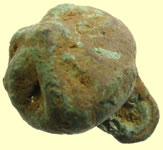 |
 |
  |
|||||||
16thC Tudor fretwork button |
1634 Charles 1st trade weight - Crown C cipher |
1461-85 Edward IV hammered silver groat - Crown mint mark London mint |
|||||||
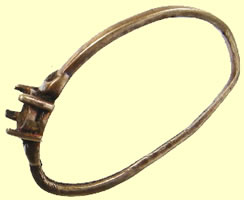 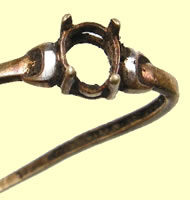 |
|||||||||
16th/17th gold ring - reported as treasure to museum - no hallmarks 22.55mm,0.80g |
|||||||||
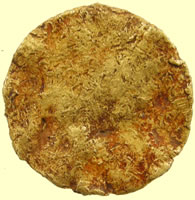 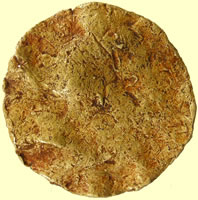 |
|||||||||
Beat to death mid 4thC House of Constantine Roman gold coin 3.74g,21.23mm |
|||||||||
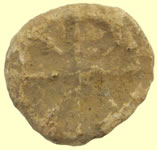 |
 |
  |
|||||||
15thC lead token |
15thC open topped thimble |
1645-6 Charles 1st hammered silver half groat |
|||||||
|
|||||||||
BC Roman republican silver sent for ID This is Q. Cassius Longinus, 55 BC. RSC/Babelon Cassia 7.
SR 391, CRR 916, RRC428/3
Mark
|
|||||||||
 |
 |
 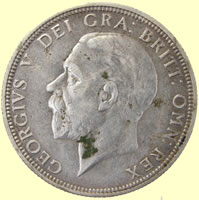 |
|||||||
Medieval D buckle |
18thC buckle |
1936 George V milled silver florin (24 pence) |
|||||||
  |
 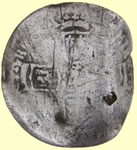 |
||||||||
Medieval hammered silver penny |
1696 William III milled silver sixpence - lovetoken |
||||||||
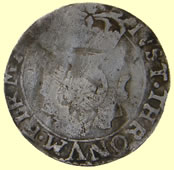 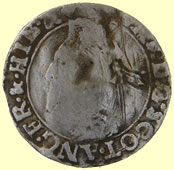 |
 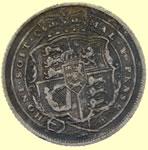 |
||||||||
1634 Scottish Charles 1st hammered silver 20 pence |
1817 George III milled silver sixpence |
||||||||
  |
 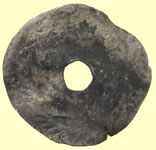 |
||||||||
1341 Edward III hammered silver penny florin penny Obv EDWAR ANGL DNS HYB Rev CIVI/TAS/LON/DON - London mint |
1649 Commonwealth hammered silver penny |
||||||||
 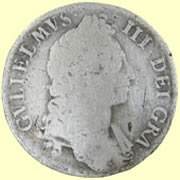 |
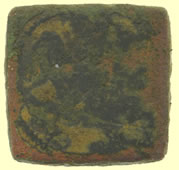 |
||||||||
1697 William III milled silver shilling (12 pence) |
17thC Figure on horseback coin weight - low countries and Germany for rijder, Burgundian rider or rijdergulden |
||||||||
 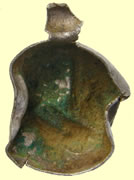 |
 |
||||||||
16thC deorated hawking bell - reported as treasure |
1550-1650 buckle |
||||||||
  |
 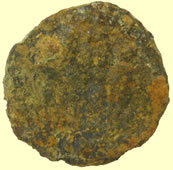 |
||||||||
1500-1700 mount |
Mid 4thC House of Constantine Roman bronze - two soldiers standing |
||||||||
Starting to 'cook' up nice
|
|||||||||
4thC House of Constantine Roman silver coin straight into the 'cooker' to remove crust - sent to Mark for ID and it's the very last of the Constantinians, Julian "The Apostate" - or "The Philosopher", depending on your point of view - the budding, new Christian Church definitely favored the former since he is probably best known for trying to revive the virtues which existed in Pagan times.
His story is not altogether unlike that of Claudius. A "minor" family member, he was always in the background eclipsed by his more famous cousins, the sons of Constantine the Great. He became Caesar almost solely in name alone in 333. Assigned the administration of the less glamorous Western segment of the Empire, he managed to survive the "purge" of competing family members immediately after Constantine's death in 337 in which his cousins Delmatius and Hannaballianus (among others) were conveniently dispatched and removed from the competition.
He took advantage of the opportunities his position afforded to both educate himself and to become proficient in the arts of war and command, and by not picking any fights - fighting only when it was necessary - he managed to outlive them all. He was proclaimed Emperor by his troops in 360 which brought him into conflict with his cousin Constantius II.
On the eve of battle in this conflict, in which he was badly outmatched and expected to be defeated, he received a summons to parley. Expecting to be taken prisoner and/or murdered, as it turned out, Constantius had died during the previous night and he was instead informed that he was now the uncontested emperor of all of the Roman Empire in 361 AD.
His Imperium was a short one, however, and he lived only another 2 years, dying in a battle with the Sasanid Persians - although his rule was remembered as particularly just and even-handed.
This piece is from his short tenure as Augustus. It's a Siliqua, a denomination introduced in the reforms of Constantine - the first circulating piece in good silver the Roman Empire had seen since the early-mid 3rd century. It appears to be from the mint at Arles, due to the eagle in the medallion at the top of the wreath which was only done in Arles, but the mintmark should be PCONST (P, S or T for the officina designation preceding the CONST - for Constantiniana, the name of Arles at this time), but for some reason, yours doesn't seem to have the officina mark. I'll see if I can find out whether this is a known variation or not.
Mark
|
|||||||||
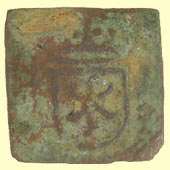 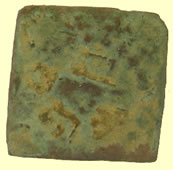 |
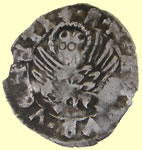 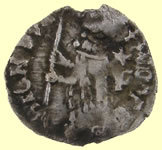 |
||||||||
1475 AD 'Sun in shield' Bronze uniface coin weight for the 'ecu au soleil' French gold coin French manufacture, probably made in Paris |
Venetian Soldino issued by Doge Michele Steno (1400-1413). Obv: MICHAEL STEN' DVX (Michele Steno, Doge). Doge standing left, holding standard. Rev: S MARCVS VENETI (Saint Mark of Venice). Winged and nimbate lion of Saint Mark facing. |
||||||||
 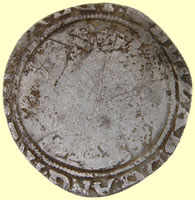 |
 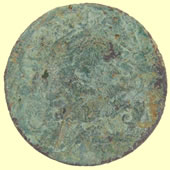 |
||||||||
1592-5 Elizabeth hammered silver shilling (12 pence)- Tun mintmark |
1783 Dutch Provinical copper coin |
||||||||
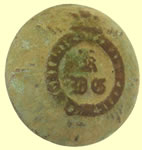 |
 |
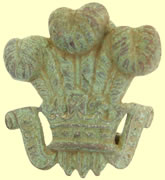 |
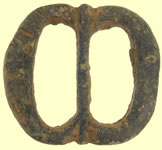 |
||||||
19thC Kings Dragoon guards button |
|
Royal fuseliers cap badge |
1550-1650 buckle |
||||||
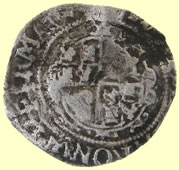 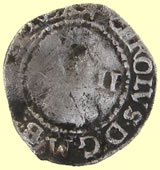 |
 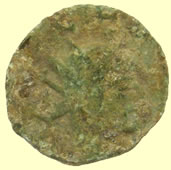 |
||||||||
1634 Charles 1st hammered silver half groat |
Nice detail on this mid 4thC Barbarous radiate Roman bronze - sent for ID This is a posthumous commemorative of Claudius II, Gothicus - 268-270 AD - "DIVO CLAVDIO". These were produced at the absolute nadir of the Empire under Quintillus and at the beginning of Aurelian's reign, and also were extensively copied. For that reason, unless a piece is either exceptionally well-made and oversize, or exceptionally crude, blundered and/or small, it's really difficult to be certain if any given specimen official or not. The Empire was in such a mess at the time that I'm not certain it even matters with this issue.
The reverse type is CONSECRATIO and shows the facade of an altar-enclosure with "eternal flame" burning on top - so you have the reverse image rotated about 120º clockwise of proper orientation.
It's a very common type in general, but since no one's all that sure where to draw the line between official and unoffical origin with these, they're an interesting case-study in how to tell one from the other.
Mark
|
||||||||
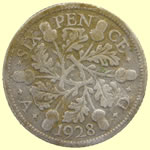  |
 |
 |
|||||||
1928 George V milled silver sixpence |
WWII New Zealand Forces button |
Royal Artillery button 1840 - 1855 |
|||||||
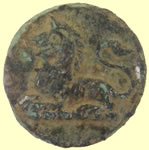 |
 |
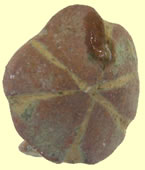  |
|||||||
19thC livery button |
15thC lead token |
A Late Medieval/ Early Post-Medieval (15th-early 16th century) cast one-piece copper-alloy mount, convex and cinquefoil in shape Broad period: MEDIEVAL Period to: POST MEDIEVAL Date from: AD 1400 |
|||||||
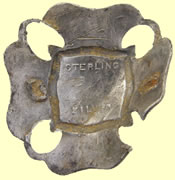 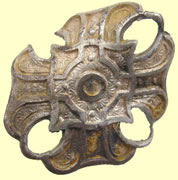 |
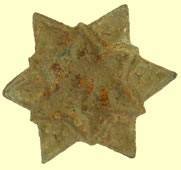 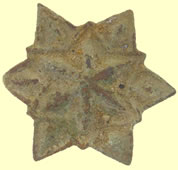 |
||||||||
Victorian silver mount - sterling silver |
A Late Medieval/ Early Post-Medieval (15th-early 16th century) cast one-piece copper-alloy mount, star shaped Broad period: MEDIEVAL Period to: POST MEDIEVAL Date from: AD 1400 |
||||||||
 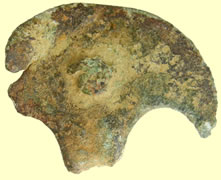 |
|||||||||
Roman decorated copper alloy pelta-shaped mount. It is semi-circular, with the upper surface having a incised decoration Broad period: ROMAN Date from: AD 40 |
|||||||||
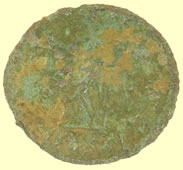  |
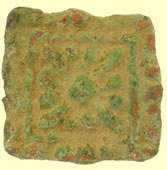 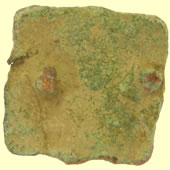 |
||||||||
4thC Barbarous radiate Roman bronze - sent for ID I'll need to see if there's anything I can tweak out of these images which, frankly, look like the Ishiahara color-blindness test circles in these photos. Yes, it's probably a radiate and if it's primarily Æ or low-end billon, we can date it to the era 265-290 with some certainty without needing to know any more. To get a lot more detail about/from this piece will take some work. |
17thC mount with 2 integral lugs |
||||||||
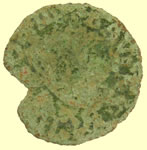 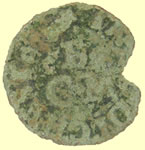 |
 |
 |
|||||||
17thC Christopher Bayles of Colchester hammered copper trade farthing - died 1666 |
Georgian trade weight |
Roman hooked mount |
|||||||
|
 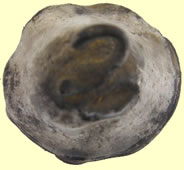 |
||||||||
17thC spur fitting |
17thC silver bell - reported as treasure to museum |
||||||||
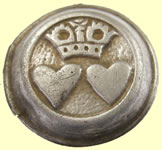 |
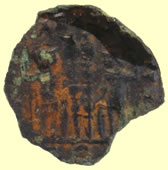  |
||||||||
17thC Charles II silver button - reported as treasure to museum |
Mid 4thC House of Constantine Roman bronze coin - 2 soldiers standing type |
||||||||
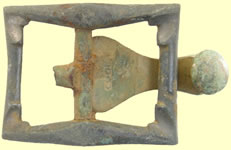 |
 |
||||||||
1690-1720 shoe or knee buckle |
1550-1650 buckle |
||||||||
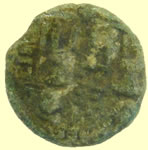 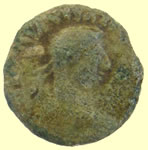 |
|||||||||
Small Roman bronze - sent for ID 12.43mm,1.37g I'm not completely sure this is a regular Roman Imperial issue - there's so little useful detail left on the reverse and although some of the obverse legend seems to be there, I can't make any sense out of it. Then there's the stylistic issues - like the potato-nose, protruberant lips, etc. I suspect this is a contemporary copy of one of the SPES REIPVBLICAE "campgates" of Magnus Maximus or his son, Flavius Victor. This would place it no earlier than the mid-late 380's - or possibly later.
That is my best guess, unless you can make-out something other than a rectilinear structure on the reverse - that's all I can see, but stylistically, it's nothing at all like the typical campgate Æ4's of the era.
Another possiblity might be that it's later than the Roman era and is some local warlord, king or chieftan from the early medieval period.
At any rate, I can't say with authority that I know exactly what it is, except that if it is "Roman", it's rather unlike anything I've seen before - particularly from British digs.
Mark
After closer examination, I'm willing to say this looks a lot like an antoninianus of Carausius, who you probably know was the emperor of the British Roman Empire c 287-293 AD. Looking carefully at what remains of the obverse lettering I think I can see IMP CARAV... I think I can see ML XXI.. in the exergue, which would make it Mint of London, and I can make out a G at the end of the reverse legend. Given the likelihood of any piece from this reign to portray Pax, I'll make a guess that it's the common PAX AVG type with Pax standing left holding an olive -branch and scepter, although Hilaritas and Laetitia are also possibilities.
Mark
Since I was a little unsure at first, I posted photos of this piece and asked for input from a few other experienced coin folks.
This is, so far as I can tell, a local, contemoprary copy of a Constantinian GLORIA EXERCITVS (Æ3) 2 soldiers standing, flanking 2 standards. The prototype was produced at all mints across the Empire in c 330-335 AD.
I've seen a number of British-found copies, of "Minimus' and Minissisimus" module, which use as their prototype the issues of the early 330's - and/or the later issues with a single standard between the soldiers.
It's uncertain whom the portrait was supposed to emulate, since I do not believe Jimmy Durante was a member of the family of Constantine, but these were struck for all 4 living male members in that time-frame. It's not too much of a stretch to make-out "...STAN..." or "...STANT..." above the portrait - and that may even be "...CIT..." at 3:00-4:00 on the reverse. I would give you the URL's for some similar pieces in my collection, but my website server is still hors de combat, although the folks in the Classics department seem finally to be trying to do something about it.
Mark
|
|||||||||
  |
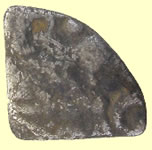 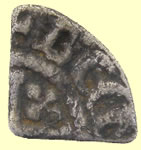 |
||||||||
1247 Henry III hammered silver voided long cross farthing Obv HENRCIVS REX Rev ** G.IL ** Moneyer Gilbert of Canterbury mint |
1180 Henry II hammered silver short cross farthing Obv HENRICVS REX Moneyer Gocelm - Winchester mint |
||||||||
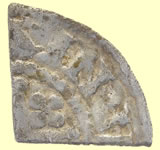 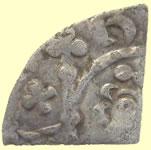 |
  |
||||||||
1180 Henry II hammered silver short cross farthing Class 1a-1b Obv HENRICVS REX Rev **AIN V - Moneyer Alain - London mint |
1603 James 1st hammered silver half groat |
||||||||
  |
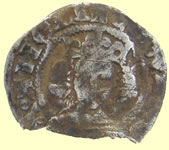 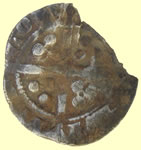 |
||||||||
1351-61 Edward III hammered silver penny -Pre treaty Rev EDWAR ANGL DNS HYB Rev CIVI/TAS/DVR/REM |
1351-61 Edward III hammered silver penny -Pre treaty A - annulets in 4 quadrants Rev EDWARDVS REX ANGLE F Rev CIVI/TAS/LON/DON - London mint |
||||||||
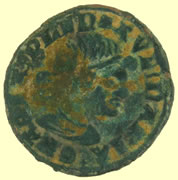 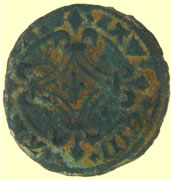 |
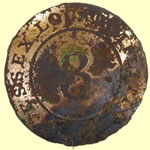 |
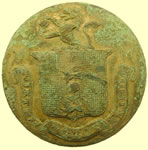 |
|||||||
Stock Jetton for the Queen and her almony 14th to15th C Emblem of Queen marguerite de Provence, wife of Louis IX Moor's head right with hair bound Obv X AVE MARIA GRACIA PLNA
|
3rd Essex militia - Napoleonic wars period
|
19thC corporation button |
|||||||
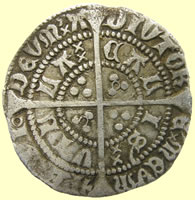  |
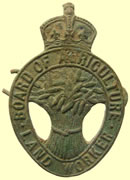 |
||||||||
Henry VI hammered silver half groat- 11 arcs to tressure Calais May/July 1422-1430 Obv HENRIC DI GRA REX ANGL X F Rev VIL/LA/CAL/IS - Calais mint |
The Board of Agriculture organised the Land Army during the Great War, starting activities in 1915. Towards the end of 1917 there were over 250,000 - 260,000 women working as farm labourers. 20,000 in the land army itself. |
||||||||
 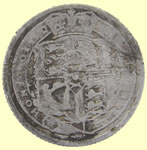 |
  |
||||||||
1818 George III milled silver sixpence |
Georgian 'Fat Boy' statue |
||||||||
 |
 |
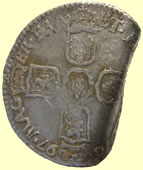 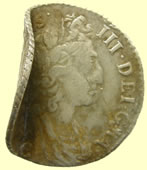 |
|||||||
LS Army button ?? |
20thC silver horse shoe mount |
1697 William III milled silver sixpence - Coventry mint |
|||||||
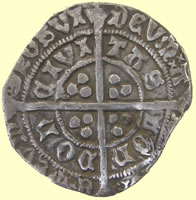 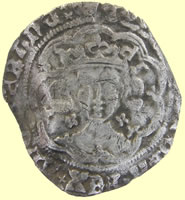 |
|||||||||
1461- 1485 Edward IV hammered silver groat -First reign Type VII - Quatrefoils at neck, Initial mark crown Rev EDWARD DI GRA REX x ANGL Z FRANC Rev CIVI/TAS/LON/DON - London mint
|
|||||||||
 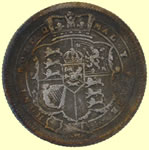 |
 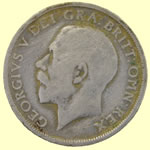 |
||||||||
1816 George III milled silver sixpence |
1920 George V milled silver sixpence |
||||||||
|
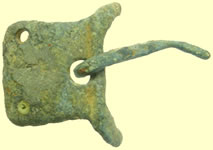 |
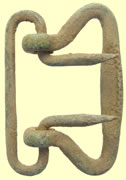 |
|||||||
Roman tweezers |
c1350-1500 Medieval buckle with integral plate |
18thC buckle |
|||||||
|
  |
||||||||
18thC apothecary measure |
18th silver button/toggle with green glass stone |
||||||||
 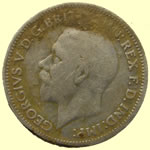 |
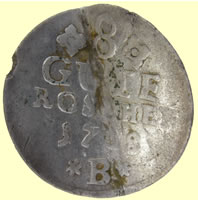 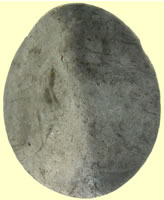 |
||||||||
1933 George V milled silver sixpence |
Huge German States 1738 - 8 Gute Groschen milled silver coin 29.12mm, 5.13g |
||||||||
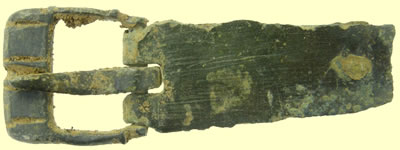 |
  |
||||||||
1250- 1400 AD Medieval buckle with integral plate |
1247 Henry III hammered silver voided long cross half penny Obv HENRICVS REX Rev /VND/NIC- Moneyer Nicole of London mint |
||||||||
 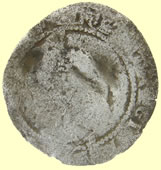 |
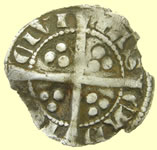 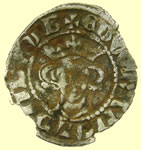 |
||||||||
1582 Elizabeth 1st hammered silver half groat |
1341 Edward II hammered silver florin penny Obv EDWAR ANGL DNS HYB Rev CIVI/TAS/CAN/TOR - Canterbury mint |
||||||||
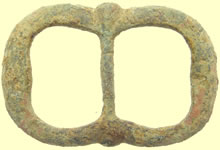 |
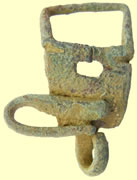 |
 |
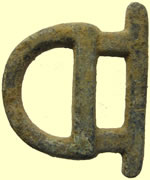 |
||||||
1550-1650 buckle |
17thC hooked buckle |
18thC buckle |
19thC harness buckle |
||||||
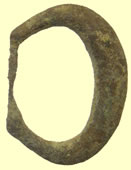 |
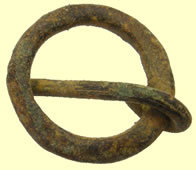 |
 |
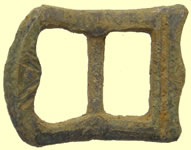 |
||||||
1250-1500 AD Medieval D buckle |
1250-1450 AD Medieval annular buckle |
Roman buckle tongue |
1550-1700 buckle |
||||||
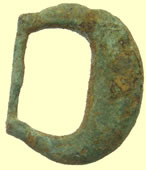 |
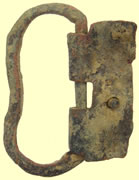 |
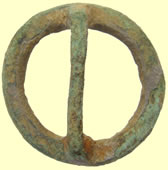 |
 |
||||||
1250-1500 AD Medieval D buckle |
Medieval D buckle with integral plate |
1400-1500 buckle |
19thC Rifle Brigade button |
||||||
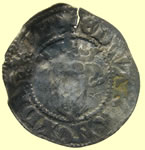 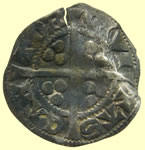 |
 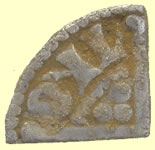 |
||||||||
1341 Edward III hammered silver florin penny Obv EDWAR ANGL DNS HYB Rev CIVI/TAS/CAN/TOR - Canterbury mint |
1247 Henry III hammered silver voided long cross farthing Obv HENRICVS REX Rev /ONL/ - Lincoln or London mint |
||||||||
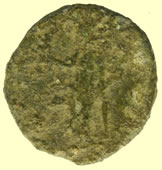  |
 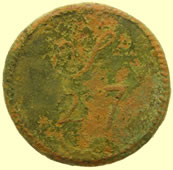 |
||||||||
4thC Barbarous radiate Roman bronze - sent for ID Claudius II, Gothicus - 268-270 AD. Antoninianus. Reverse is SECVRITAS PVBLICA - which you can tell from the "legs akimbo" pose, reclining at ease against a cippus or short column.
Coming, as it did, at the absolute darkest hour for the Roman Empire (or the darkest hour from which it recovered, at any rate), the reign of Gothicus is notable for the incredibly low standards of production of the coins - at least the Æ/billon antoniniani - so this is really a quite nice specimen, aside from the oxidation.
Mark
|
1760 British coin weight - 27 shillings - Obv S 27 |
||||||||
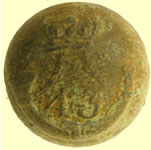 |
 |
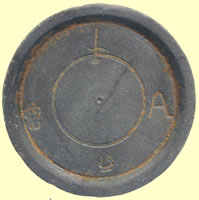 |
 |
||||||
|
19thC The Royal Regiment button |
Huge George 1st trade weight - Crown G cipher London |
17thC button |
||||||
 |
 |
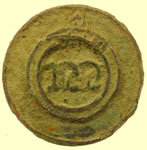 |
|||||||
Complete Georgian watch winder with winding arm |
19thC livery button |
19thC monogrammed livery button |
|||||||
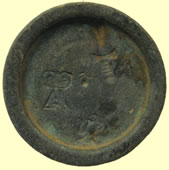 |
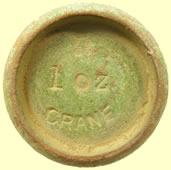 |
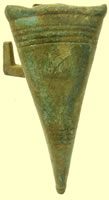 |
 |
||||||
1704 Queen Anne trade weight - Crown A cipher |
20thC Elizabeth II 1oz trade weight - Crown ER cipher |
Not sure if this is a bayonet chape or a candle snuffer ? |
'May we be happy' badge Brownies badge ? |
||||||
  |
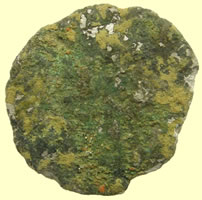  |
||||||||
Medieval mount with 2 rivet fixings |
Debased Roman silver coin - straight into the 'cooker' to remove the crud |
||||||||
 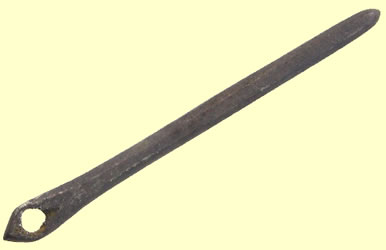 |
|||||||||
Neat medieval silver needle find - six sided - reported as treasure to museum 1.73g, 40.53mm L |
|||||||||
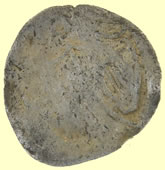 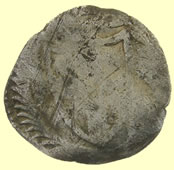 |
  |
||||||||
1649 Commonwealth half groat |
1839 Victorian milled silver sixpence |
||||||||
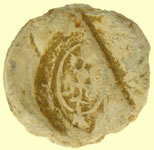 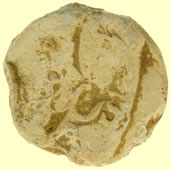 |
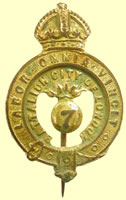 |
||||||||
17thC German lead bale seal |
7th City of London Battalion 1908 - 7th (City of London) Battalion formed. The ‘Shiny Seventh’ was the nickname of the 7th (City of London) Battalion The London Regiment which, prior to the formation of the Territorial Force in April 1908, had been the 3rd City of London Rifle Volunteers. During the Great War it formed two active battalions, 1/7th and 2/7th. The 1/7th landed in France in March 1915 with 4th London Brigade, 2nd London Division (in May these became 140th Brigade, 47th Division) and remained with it untill January 1918. Its first major action was at Festubert in May 1915, and subsequently it fought at Loos (September 1915), Vimy (May 1916), High Wood (September 1916) Butte de Warlencourt (October 1916) , Messines (June 1917) and Cambrai (November 1917). The 2/7th was raised in September 1914 and landed in France in January 1917 with 174th Brigade 58th (London) Division, fighting its first major battle at Bullecourt in May and then took part in the Third Ypres offensive in September-October 1917. In January 1918, following the reorganisation of the BEF from four to three battalions per brigades, the two battalions amalgamated becoming 7th London, in 174th Brigade 58th (London) Division, in which it served to the end of the war. |
||||||||
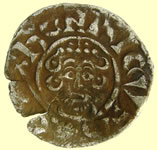 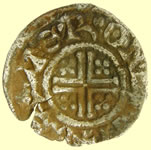 |
  |
||||||||
1199-1216 King John hammered silver short cross penny Class 5c Obv HENRICVS REX Rev WALTER.ON LVND+ Moneyer Walter of London mint |
1696 William III milled silver sixpence |
||||||||
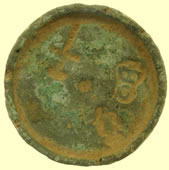 |
 |
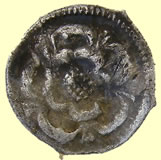 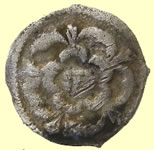 |
|||||||
George II trade weight - Crown G cipher London |
The Devonshire regiment cap badge | Tiny - 1634 Charles 1st hammered silver half penny - no legend rose each side 0.24g,9.49mm |
|||||||
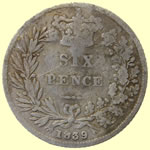 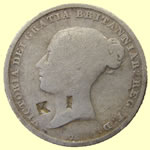 |
 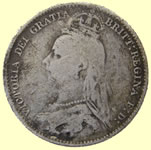 |
||||||||
1839 Victoria milled silver sixpence |
1890 Victoria milled silver sixpence |
||||||||
 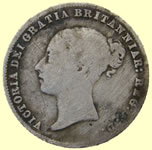 |
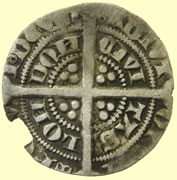  |
||||||||
1859 Victoria milled silver sixpence |
1351 - 1353 Edward III hammered silver half groat - Pre treaty series C - annulet stops, no trefoils over crown Obv + EDWARDVS.REX.ANGL.FRANC Rev CIVI/TAS/LON/DON - London mint |
||||||||
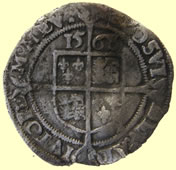  |
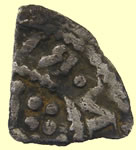 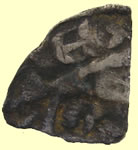 |
||||||||
1568 Elizabeth 1st hammered silver three pence |
1216 Henry III hammered silver qtr penny Reversed barred N and R |
||||||||
 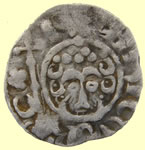 |
  |
||||||||
1217/8 Henry III hammered silver penny - Class 7c Interesting that Class 7c does not normally have pellets in curls ? Rev NICHOLE.ON.LVD - Moneyer Nichole of London mint |
1247 Henry III hammered silver voiled long cross half penny Obv HENRICVS REX Rev **/RIO/NLV/ Moneyer Heni of London mint |
||||||||
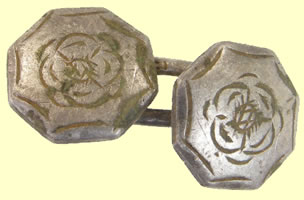 |
 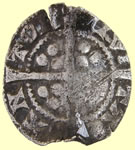 |
||||||||
18thC Royal navy silver cufflinks |
1341 Edward III hammered silver florin penny Obv EDWAR ANGL DNS HYB Rev CIVI/TAS/CAN/TOR - Canterbury mint |
||||||||
 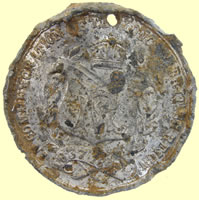 |
 |
 |
|||||||
1837-1897 Victorian Commemorative medallion Longest British reign |
Georgian buckle |
Medieval spur rowel |
|||||||
 |
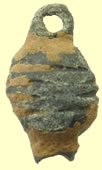 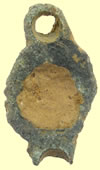 |
||||||||
Georgian watch winders |
Roman mount |
||||||||
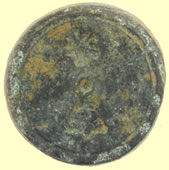 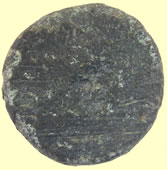 |
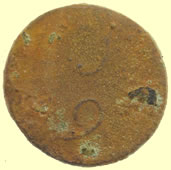 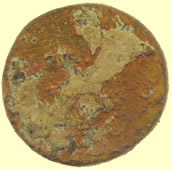 |
||||||||
1464 Rose and crown coin weight - gold half ryal |
1760 British coin weight - 9 shillings - Obv S 9 |
||||||||
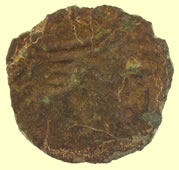 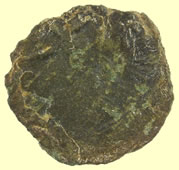 |
 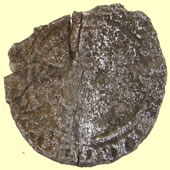 |
||||||||
4thC Barbarous radiate Roman bronze |
16thC Elizabeth 1st hammered silver half groat |
||||||||
  |
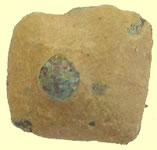  |
||||||||
1500-1700 Spur fitting |
Medieval prism mount |
||||||||
 |
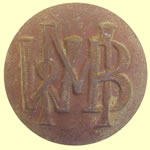 |
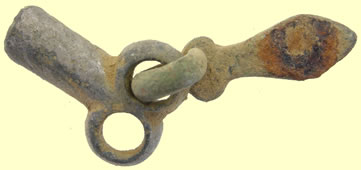 |
|||||||
17thC lead token |
WMB corporation button ? | 1500-1700 Spur |
|||||||
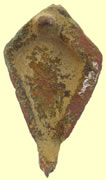 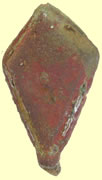 |
|
||||||||
A Post Medieval cast copper alloy lozenge shaped mount ChronologyBroad period: POST MEDIEVAL Date from: Circa AD 1500 |
Roman knife pommel |
||||||||
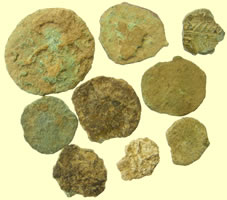 |
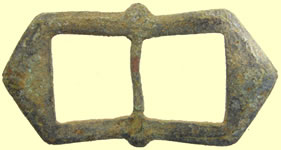 |
||||||||
Lots of Roman 'grots' in the pouches |
1500-1650 buckle |
||||||||
Saxon silver penny of Æthelred II 978 AD sent for recording and ID 1.22g,20.34mm This coin (EMC 2011.0084) belongs to the First Hand type (note the absence of a sceptre on the obverse and the plain sleeve without a curve at each side). The Benediction Hand type has two fingers bent in blessing. The moneyer is probably Eadsige or Wynsige. With thanks, Martin
|
|||||||||
Saxon C600-775 AD Silver Sceat sent for recording and ID 1.14g,12.06mm Many thanks. I have recorded the new coin (Series D (Type 8)) as EMC 2011.0085. Best wishes, Martin
|
|||||||||
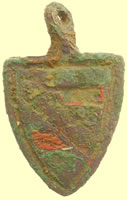 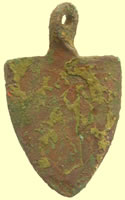 |
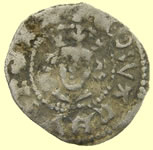 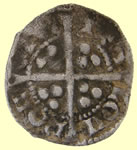 |
||||||||
13thC Medieval heraldic shield pendant - red, green and gold enameling |
1285/6 Edward 1st hammered silver farthing - new issue inner circle both sides - Type 28 - Unbarred A Rev EDWARDVS REX A Rev CIVI/TAS/LON/DON - London mint 11.41mm,0.32g |
||||||||
Debased Roman silver coin - straight into the 'cooker' - as cooked |
|||||||||
4thC Roman silver coin sent for ID 16.92mm,1.16g This is a Denarius of Elagabalus - 218-222 AD. As such it's hardly the most debased of Roman silver - it was still at least in the vicinity of 50% fine. Even though you can barely make out the reverse type, I happened to recognize Victory floating between a pair of shields - looking rather like an anachronistic segue - I have a specimen of the same type. Unfortunately this one's reverse was struck from badly worn dies, but you can see what's going on. http://www.ancientpeddler.com/apgallery/displayimage.php?album=358&pos=28 His official title/name was Marcus Aurelius Antoninus Pius (as was Caracalla's). This causes a lot of confusion among those not in-the-know and I regularly see coins of Elagabalus and Caracalla mis-identified as Antoninus Pius (138-161 AD. - I recently picked-up an incredible deal on a rare silver antoninianus of Caracalla which had been misidentified as a denarius of Antoninus Pius) The Severan Dynasty declared themselved "adopted posthumously" by Antoninus Pius and Marcus Aurelius - neither of whom was in any position to object, both having been dead for decades when Septimius Severus hove upon the scene in 193. Mark |
|||||||||
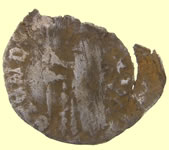  |
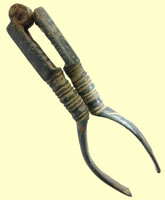 |
||||||||
Venetian Soldino issued by Doge Michele Steno (1400-1413). Doge standing left, holding banner, * / m in right field |
Georgian period nut crackers |
||||||||
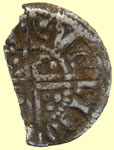 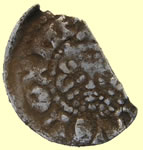 |
 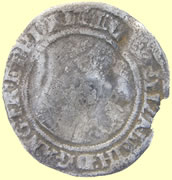 |
||||||||
1247 Henry III hammered silver voided long cross penny Obv HENRICVS REX Obv /NNE/WEC/ - Moneyer Roger of Newcastle mint |
1559 Elizabeth 1st hammered silver sixpence |
||||||||
 |
  |
||||||||
16thC Tudor seal spoon handle |
A copper-alloy mount of probable 17th century date. The mount takes the form of an elongated heart-shaped plate ChronologyBroad period: POST MEDIEVAL
|
||||||||
|
|||||||||
1st to 4thC Roman decorated gold ring with green stone - reported to Colchster museum as treasure 20.01mm,1.43g |
|||||||||
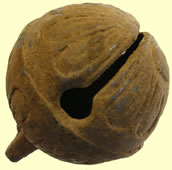  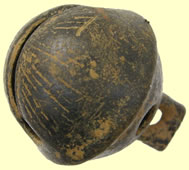 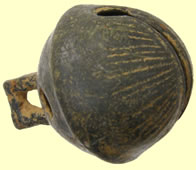
|
|||||||||
Lots of early decorated crotal bells turning up |
|||||||||
 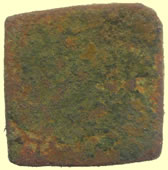 |
|
||||||||
1610 James 1st coinweight - Crown XI S - Angel gold coin |
17thC decorated gilded ring |
||||||||
  |
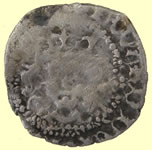 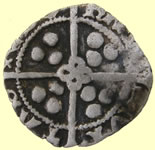 |
||||||||
Medieval gilded harness pendant |
1369-1377 Edward III hammered silver penny - Post Treaty
Satire before EBO, quatrefoil on reverse cross Rev EDWARDVS REX Rev CIVI/TAS/EBO/RACI - York mint |
||||||||
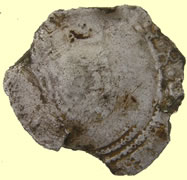 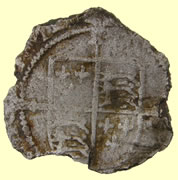 |
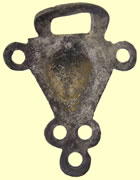 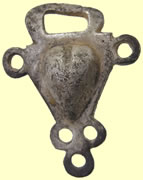 |
||||||||
1547-51 Henry VIII hammered silver groat - posthumous issue |
17thC silver clothing fastner - raise heart design - reported as treasure to museum |
||||||||
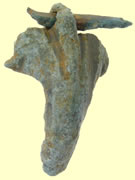 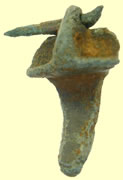 |
 |
 |
|||||||
2ndC Roman fibular brooch |
15thC casket key |
1500-1650 buckle |
|||||||
  |
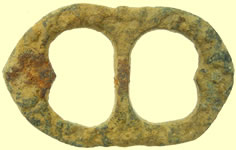 |
 |
|||||||
Roman mount |
1500-1650 buckle |
20thC Midland Railway button |
|||||||
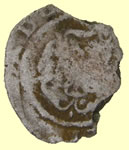 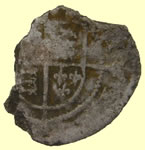 |
 |
 |
|||||||
|
First one of this type we have ever found - used as a halfpenny Obv Rose 1554 Mary hammered silver 'Base' penny |
Georgian watch winder |
19thC livery button |
|||||||
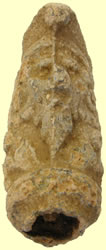 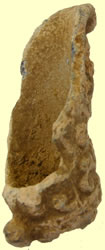 |
|||||||||
Superb 16th/17thC lead drinking vessel handle - bearded face motif
|
|||||||||
  |
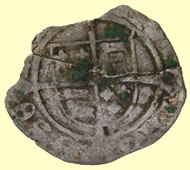 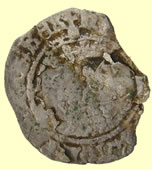 |
||||||||
17thC mount Broad period: POST MEDIEVAL |
1544-7 Henry VIII hammered silver groat - Third coinage |
||||||||
  |
 |
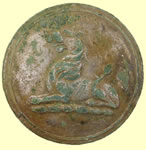 |
|||||||
1634 Charles 1st hammered copper rose farthing |
15thC cockeral type barrel tap key - Hand foundary mark |
19thC livery button |
|||||||
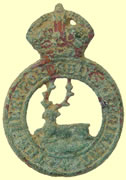 |
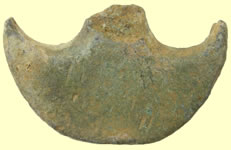 |
||||||||
20thC Royal Hertfordshire regiment cap badge |
Roman copper alloy pelta-shaped mount. It is semi-circular. Broad period: ROMAN Date from: AD 40 |
||||||||
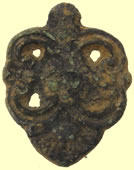  |
 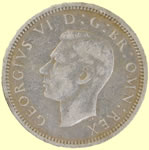 |
||||||||
1500-1700 mount |
1940 George V milled silver sixpence |
||||||||
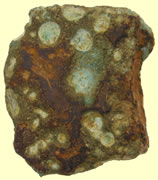 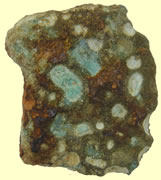 |
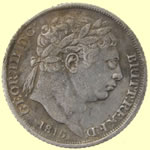 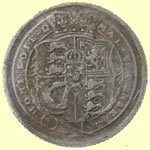 |
||||||||
850Bc Bronze scoketed axe fragment |
1816 George III milled silver sixpence |
||||||||
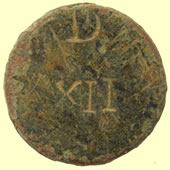 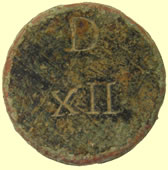 |
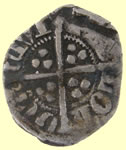 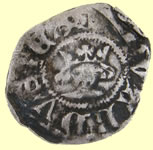 |
||||||||
1770's coinweight - 12 pence (1 shilling) Obv & Rev D XII |
1285/6 Edward 1st hammered silver farthing - new issue inner circle both sides - Type 28 Oval flan Rev EDWARDVS REX Rev CIVI/TAS/LON/DON - London mint 11.41mm,0.32g |
||||||||
 |
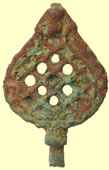 |
|
|||||||
1550-1700 buckle |
Georgian watch winder |
1216 Henry III hammered silver short cross penny -Class 6c1 Obv HENRICVS REX Rev **CA:SIM** - Simon of Canterbury mint |
|||||||
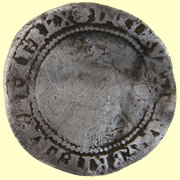  |
  |
||||||||
1603 Irish James 1st hammered silver sixpence |
20thC Readers digest token
|
||||||||
 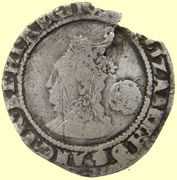 |
 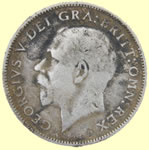 |
||||||||
1572 Elizabeth 1st hammered silver sixpence |
1912 George V milled silver sixpence |
||||||||
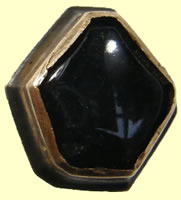 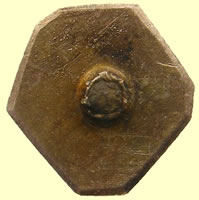 |
|||||||||
13thC Medieval gold ring bezel with black sapphire - reported as treasure to museum 1.05g,11.13mm |
|||||||||
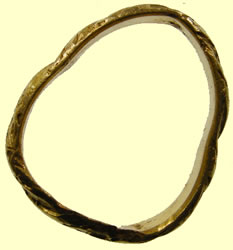  |
|||||||||
16th/17thC decorated gold ring - reported as treasure to museum 4.00g, 22.11mm |
|||||||||
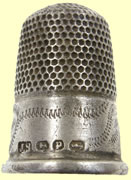 |
 |
||||||||
Silver thimble - Birmingham hall mark - not checked books for date letter yet Maker JS - James Swan |
Hoard of 20thC Girl guides badges |
||||||||
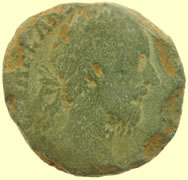  |
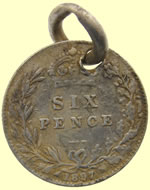 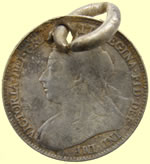 |
||||||||
Big Roman AS coin - sent for ID There's not quite enough legend present to give you "chapter and verse" on this one, but it's Marcus Aurelius - 161-180 AD - and the reverse type is Aequitas holding a set of scales and cornucopiae. Chances are the reverse legend is a typical Antonine laundry-list of titles, TR P, IMP and COS year notations. Mark |
1897 Victoria milled silver sixpence |
||||||||
 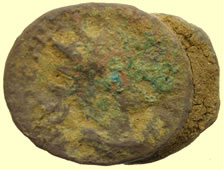 |
 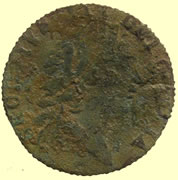 |
||||||||
Great find 2 mid 4thC Roman barbarous radiate coins stuck togther 2 coins fused together makes it sound as though there must have been a (cracked or broken) pot or (organic material) purse or bag which although it didn't keep water out, more or less held the coins in place until fairly recently - it takes a while for the diagenesis process to fuse coins together. This could be why you're getting a bunch of radiate copies - a somewhat substantial group which was only scattered relatively recently. At any rate, it seems you're digging a mid-late 3rd century horizon at the moment or an area through which a plow-pass scattered a significant number of similar pieces.
The coin which is facing the camera in your photo of the "twofer" looks as though it might be an official piece from one of the later Gallic emperors, probably Tetricus I - I think I can read [IM] P C TET [RICVS...] and the quality of the engraving doesn't seem like the typical crude work of the contemporary copies. I believe that these and their copies circulated side-by-side for at least a part of the time during which they were current, the copies making up for a shortfall of official coin, even from the "local" Gallic Empire. Since you very seldom (if ever, so far as I remember) find coins of the "interim" Roman emperors like Aurelian and Probus whose coins are so common on the continent, that was evidently a time during which the British Isles, Brittany and Northern Europe in general was experiencing a vacuum of interaction with the Roman Central Authority, including the supply of coin.
Mark
|
1788 George III spade half guinea gaming token Obv For the glory of the good old days |
||||||||
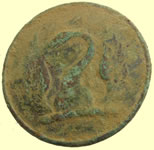 |
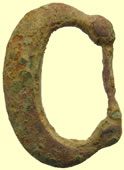 |
 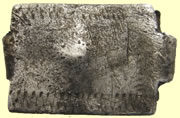 |
|||||||
19thC livery button |
Medieval buckle |
1783 style hallmark - 18thC silver clog fastener Maker RH - Robert Hennell London |
|||||||
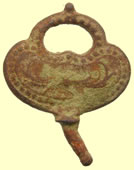 |
 |
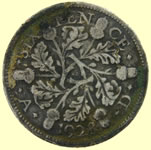  |
|||||||
Georgian watch winder |
18thC toy cannon |
1928 George V milled silver sixpence |
|||||||
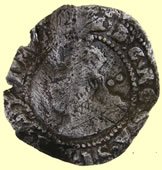 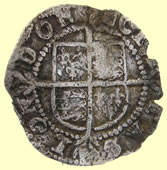 |
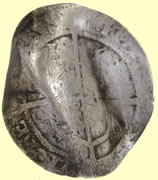  |
||||||||
1566 Elizabeth 1st hammered silver half groat |
1582 Elizabeth 1st hammered silver sixpence |
||||||||
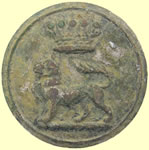 |
 |
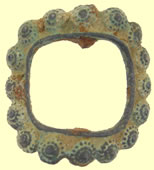 |
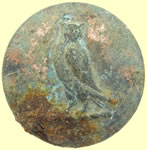 |
||||||
19thC livery button |
19thC Georgian Royal Engineers button |
Georgian buckle |
19thC livery button |
||||||
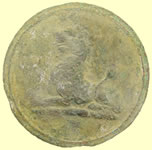 |
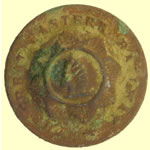 |
|
|||||||
19thC livery button |
20thC Great Eastern railways button |
15thC open topped thimble |
|||||||
 |
 |
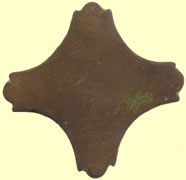  |
|||||||
1790 Royal artillery button |
Victorian harness mount |
1500-1700 mount |
|||||||
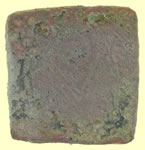 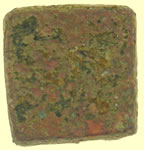 |
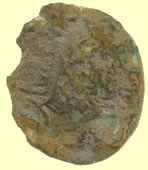 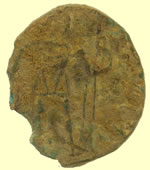 |
||||||||
c16thC Gold Ryal brass single sided coin weight - rose on ship is for Ryal - R in the field indicates weight for a Rose Noble or Ryal |
4thC Barbarous radiate Roman bronze - sent for ID This appears to be a "garden variety" mid-later 3rd century contemporary local copy - the sort of thing which is liable to be referred to (although I hate the term) as a so-called "barbarous radiate". It's stylistically very interesting in that the stick-figure reverse device is built up out of almost all straight lines and angles, where these generally tend to be made up of curvy or loopy, freehand-engraved lines. I'm going to guess - although with the right hand and the attribute it's holding off-flan it's only a guess - that this is meant to be a representation of PAX - which is by far the most common reverse type for these. Spes and Salus are both fairly popular as well, but neither holds a scepter.
2 coins fused together makes it sound as though there must have been a (cracked or broken) pot or (organic material) purse or bag which although it didn't keep water out, more or less held the coins in place until fairly recently - it takes a while for the diagenesis process to fuse coins together. This could be why you're getting a bunch of radiate copies - a somewhat substantial group which was only scattered relatively recently. At any rate, it seems you're digging a mid-late 3rd century horizon at the moment or an area through which a plow-pass scattered a significant number of similar pieces.
The coin which is facing the camera in your photo of the "twofer" looks as though it might be an official piece from one of the later Gallic emperors, probably Tetricus I - I think I can read [IM] P C TET [RICVS...] and the quality of the engraving doesn't seem like the typical crude work of the contemporary copies. I believe that these and their copies circulated side-by-side for at least a part of the time during which they were current, the copies making up for a shortfall of official coin, even from the "local" Gallic Empire. Since you very seldom (if ever, so far as I remember) find coins of the "interim" Roman emperors like Aurelian and Probus whose coins are so common on the continent, that was evidently a time during which the British Isles, Brittany and Northern Europe in general was experiencing a vacuum of interaction with the Roman Central Authority, including the supply of coin.
Mark
|
||||||||
  |
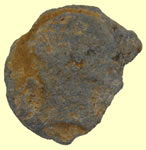  |
||||||||
17thc sword hanger |
Roman lead token |
||||||||
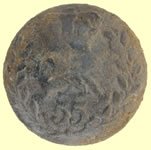 |
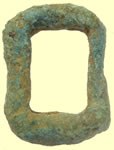 |
 |
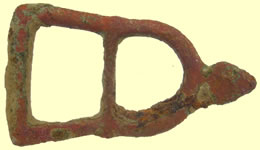 |
||||||
55th Regiment of foot
|
Medieval buckle |
C10thC Saxon harness cheek piece |
1500-1650 buckle |
||||||
  |
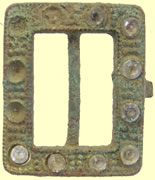 |
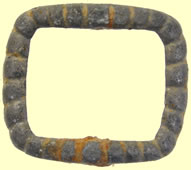 |
|||||||
1652, 8 Maravedis revalidated with VIII counterstamp on 8 Maravedis of 1625 of uncertain mint, Felipe IV (1621-1665) of Spain
|
Georgian buckle |
Georgian buckle |
|||||||
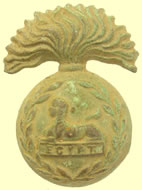 |
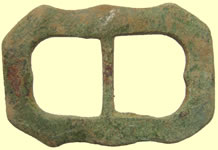 |
 |
|||||||
Royal fuseliers cap badge |
1500-1650 buckle |
Georgian jews harp |
|||||||
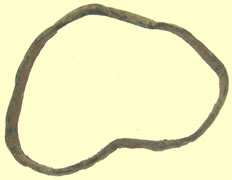 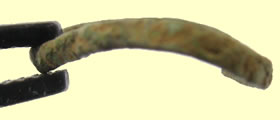 |
|||||||||
17thC decorated copper ring
|
|||||||||
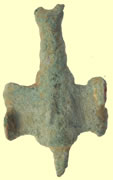 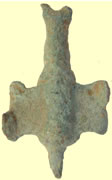 |
 |
||||||||
Roman hanging pendant |
Roman buckle tongue |
||||||||
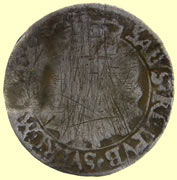 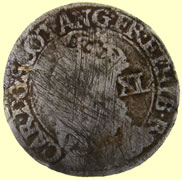 |
 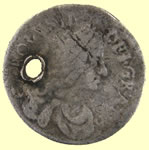 |
||||||||
1637- 1642 Scottish Charles 1st machine made forty pence silver coin - Briot's issue- XL by bust Obv CAR.DG.SCOT.ANG.FR.ET.HIB.REX Rev SALUS REIPVIBLICE SUPREMA LEX - Crown over thistle |
1681 Charles II milled silver 2 pence |
||||||||
  |
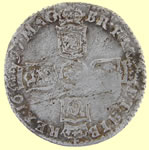 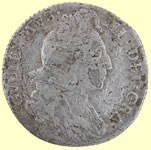 |
||||||||
Taco'd 1279 Edward 1st hammered silver penny Rev CIVI/TAS/CAN/TOR - Canterbury mint |
1697 William III milled silver sixpence |
||||||||
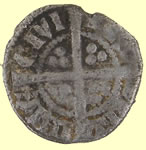 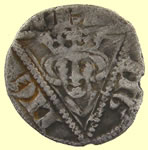 |
  |
||||||||
1279-1284 Irish Edward Ist hammered silver penny Rev CIVI/TAS/DUB/LINE -City of Dublin |
1834 William IV milled silver sixpence |
||||||||
  |
 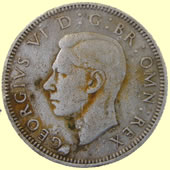 |
||||||||
1916 George V millled silver half crown (30 pence) |
1937 George V millled silver shilling (12 pence) |
||||||||
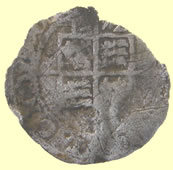 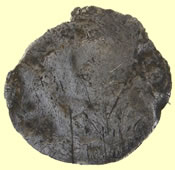 |
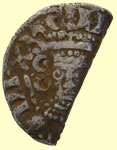  |
||||||||
1572 Elizabeth 1st hammered silver half groat |
Taco'd 1247 Henry III hammered silver voided long cross penny |
||||||||
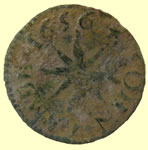 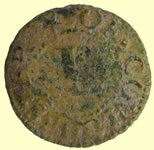 |
 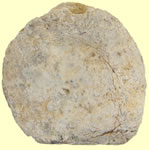 |
||||||||
1656 John Lamb of Colchester Essex hammered copper trade farthing |
Post medeival lead cloth seal |
||||||||
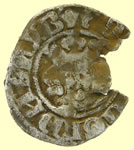 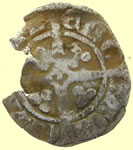 |
 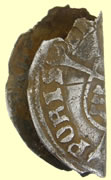 |
||||||||
1341 Edward III hammered silver penny Obv ED*** DNS HYB Quatrefoil with pellet at centre of reverse cross -York Archiepiscopal issue Rev CIVI/TAS/EBO/RACI |
1554 Mary hammered silver groat |
||||||||
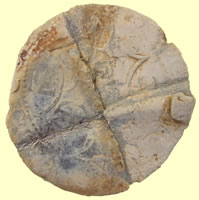 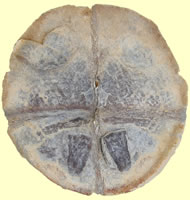 |
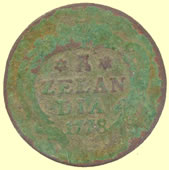 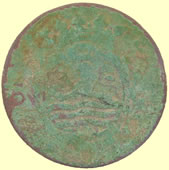 |
||||||||
Huge East India Company lead seal |
1778 Dutch Zeelandia copper coin |
||||||||
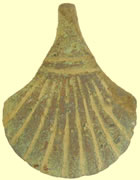  |
|
||||||||
Medieval hanging pendant - some red enameling remains |
Medieval mount |
||||||||
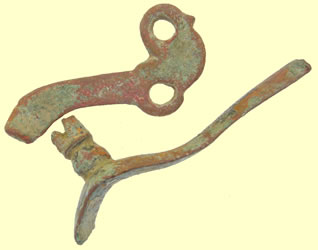 |
 |
 |
|||||||
Georgian spur parts |
18thC silver Navy button |
Continental navy button |
|||||||
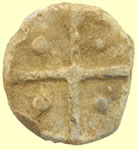 |
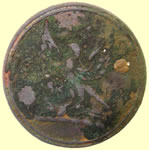 |
|
|||||||
15thC lead token - type 2 |
19thC livery button |
2ndC Roman fibular brooch |
|||||||
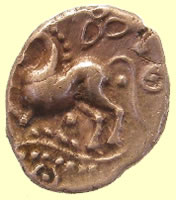 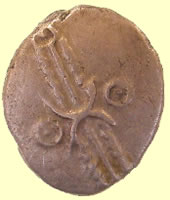 |
|||||||||
Eastern uninscribed Celtic gold qtr stater of Dubnovellaunos, c 20 BC 12.25mm,1.3g |
|||||||||
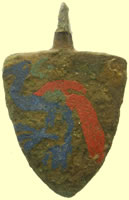 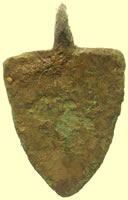 |
|||||||||
Stunning 13thC Heraldic shield pendant - Blue enamelled bird with red feathers
|
|||||||||
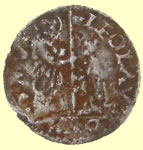 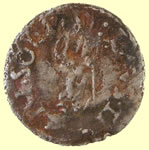 |
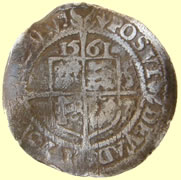 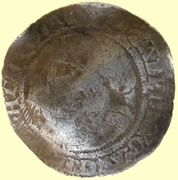 |
||||||||
(1501-1521). Rev: LAVS TIBI SOLI (Thee Alone be Praised). Haloed figure of Christ holding a cross. Obv: LE LAV DVX S M V (Leonardo Lauredan, Doge. St Mark of Venice.) Doge kneeling before Saint Mark. |
1561 Elizabeth 1st hammered silver sixpence |
||||||||
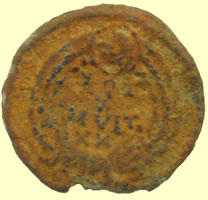 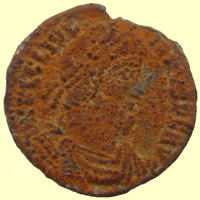 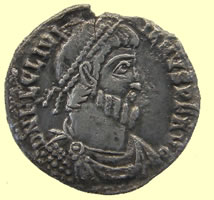 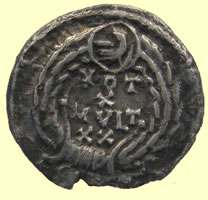 |
|||||||||
Finished 'cooked' pictures of a 4thC Hosue of Constantine Roman silver coin
|
|||||||||
 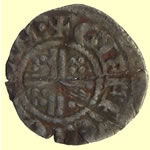 |
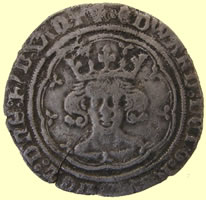  |
||||||||
1216 Henry III hammered silver short cross penny - Class 7b-7c Obv HENRICVS REX Rev +GIFFREI.ON.LVND - Moneyer Giffrei of London mint |
1363-1369 Edward III hammered silver groat - Treaty series - Mint mark Cross potent - double satire stops on rev Obv EDWARD DEI G REX ANGL DNS HYB Z AQT Rev CIVI/TAS/LON/DON |
||||||||
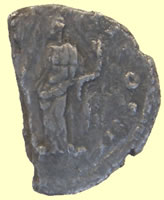  |
|||||||||
'Cooked' Roman coin sent for ID
|
|||||||||
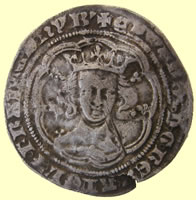 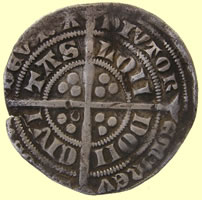 |
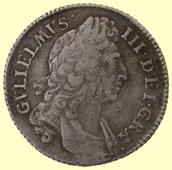 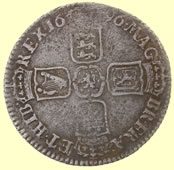 |
||||||||
1351- 1361 Edward III hammered silver groat - Pre treaty period Std F type Obv EDWARD DG REX ANGL Z FRANC D HYB Rev CIVI/TAS/LON/DON
|
1696 William III milled silver sixpence |
||||||||
|
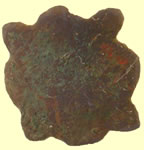 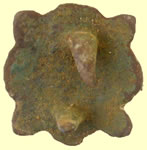 |
||||||||
C10thC Saxon harness cheek piece |
1500-1700 mount |
||||||||
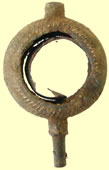 |
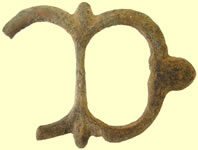 |
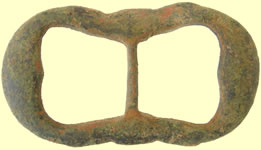 |
|||||||
Georgian watch winder |
1500-1650 buckle |
1500-1700 buckle |
|||||||
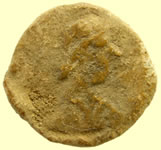 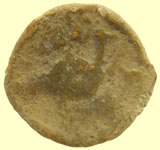 |
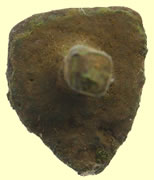 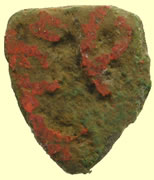 |
||||||||
17thC lead token |
13thC enamelled heraldic shield mount |
||||||||
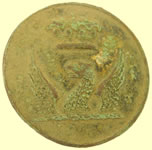 |
 |
  |
|||||||
19thC livery button |
19thC livery button |
4thC Roman barbarous radiate coin sent for ID There's not a lot to go on, but I believe this is an Æ Antoninianus of Victorinus. You're undoubtedly familiar with Tetricus since his coins seem quite common (and quite commonly dug, as well) in Britain. You've sent me photos of a couple of Tetricus pieces in the last few weeks. Victorinus was Tetricus' immediate predecessor as emperor of the Gallic Empire, 268-270 AD. I can't really make out much on the reverse, but I suspect it's one of the "stable of standard personifications". If the raised area corresponds to shoulders of a standing figure, it could be Spes walking left holding a flower in outstretched right hand and hitching hem of skirt with her left . Or, it's possible it could be Pax holding a branch and transverse scepter. It also might be Victory walking left holding a wreath and palm-branch. I'd need to be able either to see a bit of legend or a little more detail on the figure to be certain which. Victorinus is a bit scarcer, overall, than Tetricus. Mark |
|||||||
  |
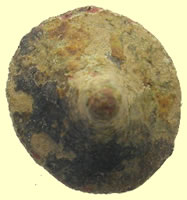 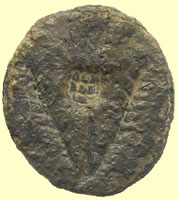 |
||||||||
Roman mount |
17thc seal matrix - thistle inscription |
||||||||
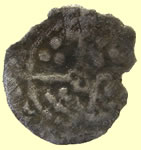 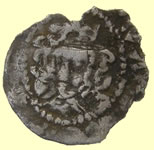 |
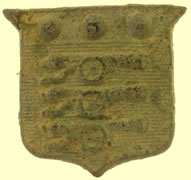 |
||||||||
1327 Edward III hammered silver penny York mint - quartrefoil at centre of reverse cross |
18thC Royal Artillery badge |
||||||||
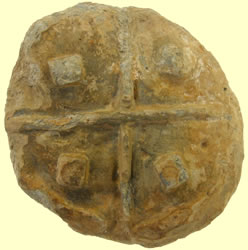 |
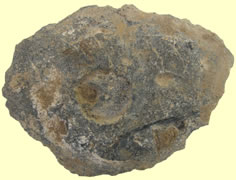 |
||||||||
Huge medieval lead trade weight |
18thC lead palm sewing guide |
||||||||
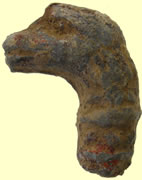 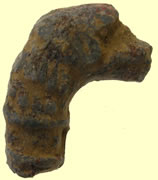 |
 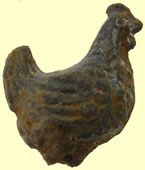 |
||||||||
Medieval finial with red enamelling remaining |
20thC toy chicken |
||||||||
 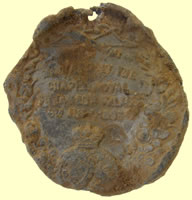 |
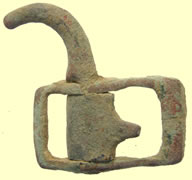 |
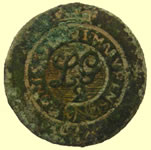 |
|||||||
19thC Victoria and Albert medallion |
Geotgian spur buckle |
19thC 2nd Royal life guard regiment button |
|||||||
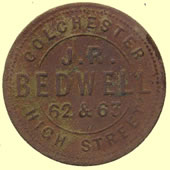  |
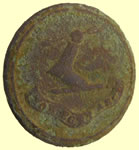 |
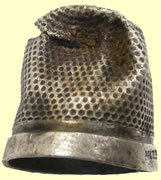 |
|||||||
19thC JR Bedwell Colchester token - Beds and paper hanging, furniture, plates and watches |
19thC livery button |
20thC Sterling silver thimble |
|||||||
 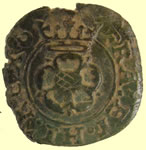 |
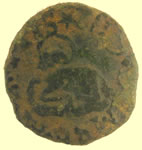  |
||||||||
1634 Charles 1st hammered copper rose farthing |
1654 Thomas Lambeof Colchester Essex hammered copper trade farthing |
||||||||
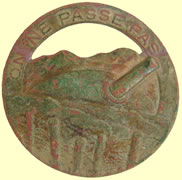 |
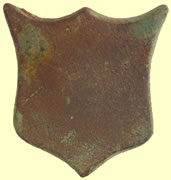 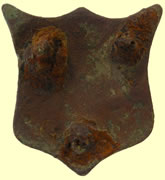 |
||||||||
Superb WWI find "They shall not pass" (French: "Ils ne passeront pas/On ne passe pas"; It was most famously used during the Battle of Verdun in World War I by French General Robert Nivelle (although some have attributed it to his commander, Philippe Pétain). It appears on propaganda posters, such as that by Maurice Neumont after the Second Battle of the Marne, which was later adopted on uniform badges by units manning the Maginot Line. |
Shield shaped mount ChronologyBroad period: POST MEDIEVAL Period to: POST MEDIEVAL Date from: AD 1540 |
||||||||
  |
 |
 |
|||||||
Medieval copper alloy belt mountChronologyBroad period: MEDIEVAL Date from: AD 1100 |
19thC livery button |
Royal fuseliers regiment cap badge |
|||||||
 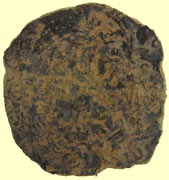 |
 |
||||||||
1340 French shiled of France jetton |
Medieval religious plate rim - Lombardic script |
||||||||
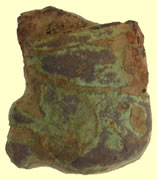  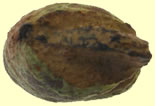 |
|||||||||
Medieval animal headed knife pommel
|
|||||||||
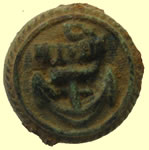 |
 |
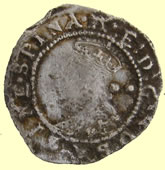 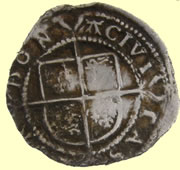 |
|||||||
Generic merchant navy button |
|
1582-4 Elizabeth 1st hammered silver half groat - A mint mark |
|||||||
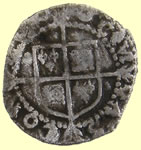 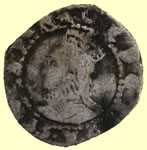 |
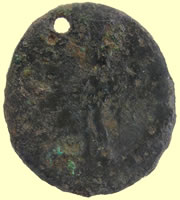 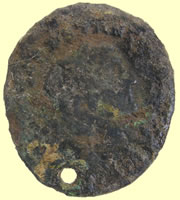 |
||||||||
1600 Elizabeth 1st hammered silver penny- O mint mark |
4thC Roman coin used as Saxon pendant - sent for ID 6.84g,28.86mm Although I can't make out very much of the name on the obverse, on the basis of size and general type plus what few letters are readable, I'll guess that this is Constantius I (father of Constantine the Great) as Caesar - 293-305 AD. He is particularly associated with Britain, BTW, dying at York in 306 after a very brief stint as Augustus. The reverse appears to be the common GENIO POPVLI ROMANI type with the "Genius" of the Roman People standing left, sacrificing from a patera and holding a cornucopiae. This was the more-or-less "standard" reverse type for the large-module folles of the late 3rd-early 4th centuries - although there were many other types, the "Genio's" far outnumbered any other type and were struck at all Imperial mints. Mark |
||||||||
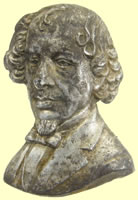  |
|||||||||
Stunning 19thC silver brooch - no hallmarks I wonder if this is celebrating William Wilberforce (24 August 1759 – 29 July 1833 leader of the movement to abolish the slave trade. |
|||||||||
  |
  |
||||||||
1247 Henry III hammered silver voided long cross penny Obv HENRICVS REX Moneyer Willem of Norwich mint Obv/LEI/ONN |
1247 Henry III hammered silver voided long cross penny Obv HENRICVS REX |
||||||||
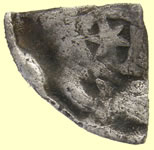 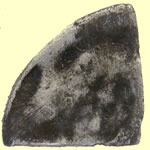 |
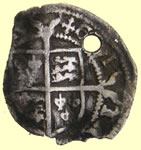 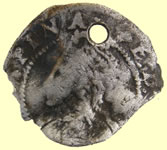 |
||||||||
13thC Scottish hammered silver qtr penny - star in quadrant |
1560-1 Elizabeth 1st hammered silver penny |
||||||||
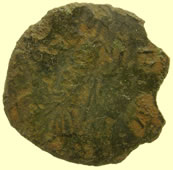  |
  |
||||||||
4thC Roman coin - sent for ID 1.70g, 19.26 This one is surprisingly large (although not particularly heavy) for the genre - radiate contemporary copy. This example is adequately far removed from official origins that the legend has been reduced to a decorative element - a meaningless border comprised primarily of "I's". Since the portrait appears to be bearded, I'd supppose a coin of Victorinus, Tetricus I or Claudius II supplied the prototype. The reverse figure is adequately vague that about all we can do is guess at which personification or deity may have been intended, but on the strength of the transverse scepter and the relatively sparse, widely spaced "lettering", I'd be willing to guess that PAX AVG may have been what the engraver had in mind. The general time-frame would be approximately 270-280 AD. give or take a couple of years. Mark |
A copper-alloy mount of probable 17th century date. The mount takes the form of an elongated heart-shaped plate. Extending from the reverse are two broken integral rivetsChronologyBroad period: POST MEDIEVAL |
||||||||
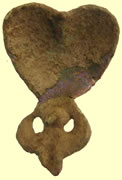 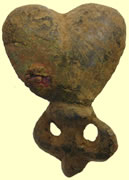 |
|||||||||
A copper-alloy mount of probable 17th century date. ChronologyBroad period: POST MEDIEVAL
|
|||||||||
|
|||||||||
17th/18thC gold ring - inscription uses old style long S as a normal S - Maker Rh - no hallmarks 4.41g, 19.66mm Inscription reads 'CONTENT IS A TREASURE' Long style S went out of use between 1782 and 1793 'CONTENT IS A TREASURE'
An italicized long s used in the word "Congress" in the United States Bill of Rights Reported as treasure to museum |
|||||||||
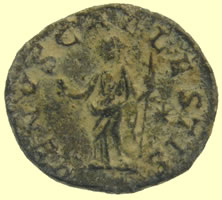 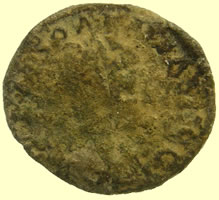 |
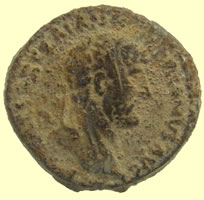 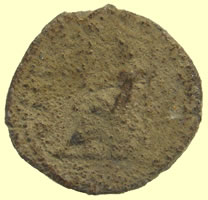 |
||||||||
Debased Roman silver coin straight into the 'cooker' sent for ID 2.60g, 18.83mm This is very interesting - I'm curious to see what comes out on the obverse. The reverse - VENVS CAELESTIS - is very clear, of course, but it's a pretty uncommon reverse type, generally only known for a couple of Imperial women around the time of Elagabalus (218-222), but associated with a few "hybrid" types, too. I haven't been able to make the few semi-legible letters on the obverse line up with any of the legends I'd expect it to be. An unusual find, more than likely to be scarce or rare. Mark Checking against a different obverse legend than I was looking at at first, I believe now that this is the identity of your VENVS CAELESTIS http://www.stoa.org/gallery/album97/ML_05_J_Soaemias_Venus_den Julia Soaemias, mother of Elagabalus This is the most "commonly seen" of this unusual reverse's appearances - still a pretty scarce piece. Mark |
Roman silver coin straigth into the 'cooker' sent for ID I'm afraid at this point I can't tell you much more than that it's a denarius of Hadrian (117-138 AD.) Which of the many possible seated deities or personifications might be on the reverse I really can't tell at this point - although if, as I suspect, it turns out that she's holding a branch in her right hand, it's likely to be Pax. Mark |
||||||||
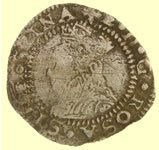  |
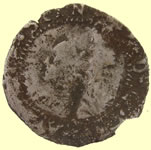 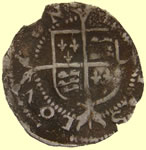 |
||||||||
1560-1 Elizabeth 1st hammered silver penny -Cross crosslet mint mark |
1580-1 Elizabeth 1st hammered silver penny - Latin cross mint mark |
||||||||
 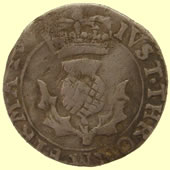 |
  |
||||||||
1634 Scottish Charles 1st hammered silver 20 pence |
1920's silver boxing medallion |
||||||||
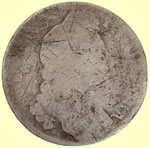  |
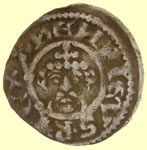 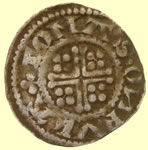 |
||||||||
1696 William III milled silver sixpence |
Stunning example and the first Wales mint we have ever found 1190 -1205 King John hammered silver short cross penny of the Rhuddlan mint - Class ii Obv HENRICVS REX Rev TOMAS.ON.RVLA - Moneyer Tomas of Rhuddlan Wales mint Short cross coins were produced during the period 1180-1215 at this mint |
||||||||
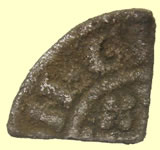 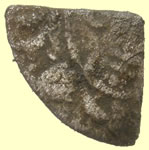 |
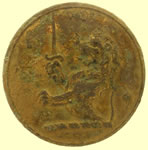 |
 |
|||||||
1216 Henry III hammered silver short cross qtr penny Obv HENRICVS REX Rev **ON.GI - Ipswich mint |
19thC livery button |
1500-1650 buckle |
|||||||
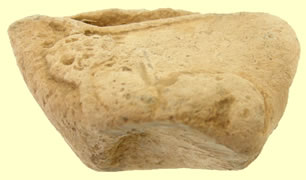 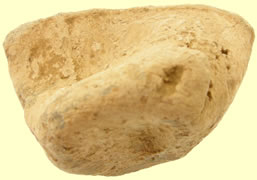 |
|||||||||
First decorated 1641 Civil War lead powder measure and cap I have seen - looks like a cat design
|
|||||||||
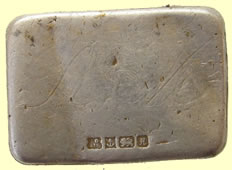 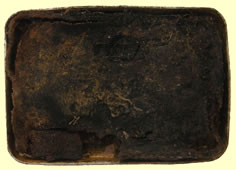 |
|||||||||
Solid silver Birmingham 1982 Hall mark - thin bezel - watch back ?
|
|||||||||
  |
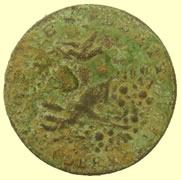 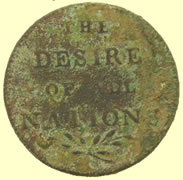 |
||||||||
1422- 61 Bronze uniface Crowned Three lis in shield French Ecu gold coin weight 2.96g. Letters by the shield indicate French not English version. The Gold Ecu was worth 4 shillings in England |
'The desire of all nations' - medallion Peace of Amiens. THE DESIRE OF ALL NATIONS. Rev: PEACE & PLENTY OCTOBER 1 1801 |
||||||||
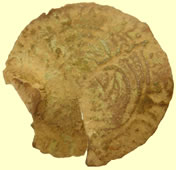 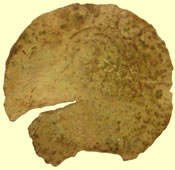 |
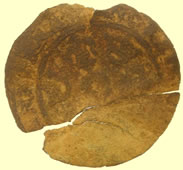  |
||||||||
1553- 86 AD Hans Schultes I ‘Lion of St Mark’ Jetton |
1586 Hans Krauwincel II Rose orb Jeton HANNS KRAVWINCKEL IN NVRENB |
||||||||
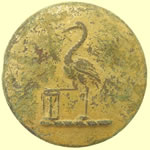 |
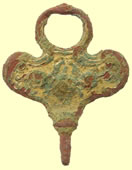 |
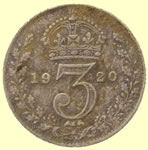 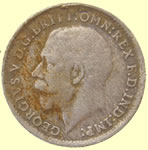 |
|||||||
19thC livery button |
Georgian watch winder |
1920 George V milled silver 3 pence |
|||||||
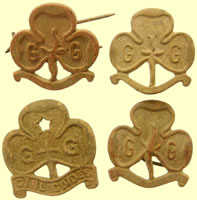 |
|||||||||
Our 2nd 20thC Girl Guides badge hoard of the year LOL |
|||||||||
Roman silver coin straight into the 'cooker' sent for ID - Sent off latest 'cooked' pictures to Mark I'm afraid at this point I can't tell you much more than that it's a denarius of Hadrian (117-138 AD.) Which of the many possible seated deities or personifications might be on the reverse I really can't tell at this point - although if, as I suspect, it turns out that she's holding a branch in her right hand, it's likely to be Pax. Mark |
|||||||||
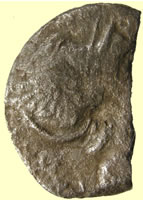 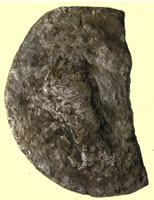 |
|||||||||
Cooked Roman BC republican coin sent for ID |
|||||||||
  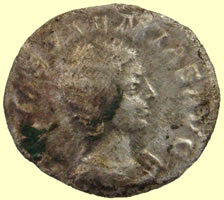 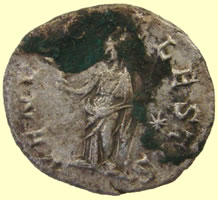
|
|||||||||
Debased Roman silver coin straight into the 'cooker' sent for ID 2.60g, 18.83mm This is very interesting - I'm curious to see what comes out on the obverse. The reverse - VENVS CAELESTIS - is very clear, of course, but it's a pretty uncommon reverse type, generally only known for a couple of Imperial women around the time of Elagabalus (218-222), but associated with a few "hybrid" types, too. I haven't been able to make the few semi-legible letters on the obverse line up with any of the legends I'd expect it to be. An unusual find, more than likely to be scarce or rare. Mark Checking against a different obverse legend than I was looking at at first, I believe now that this is the identity of your VENVS CAELESTIS http://www.stoa.org/gallery/album97/ML_05_J_Soaemias_Venus_den Julia Soaemias, mother of Elagabalus This is the most "commonly seen" of this unusual reverse's appearances - still a pretty scarce piece. Mark |
|||||||||
Roman silver coin straight into the 'cooker' sent for ID - Sent off latest 'cooked' pictures to Mark I'm afraid at this point I can't tell you much more than that it's a denarius of Hadrian (117-138 AD.) Which of the many possible seated deities or personifications might be on the reverse I really can't tell at this point - although if, as I suspect, it turns out that she's holding a branch in her right hand, it's likely to be Pax. Mark |
|||||||||
This BC Republican silver coin has been 'cooking' since March and detail is just starting to come through. Appears to be a helmeted guys with an animal on obv- the crust on this coin is one of the hardest I have seen |
|||||||||
 |
|||||||||
|
